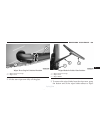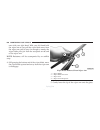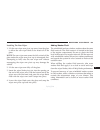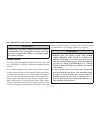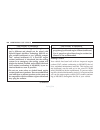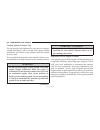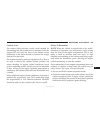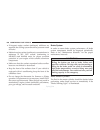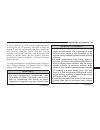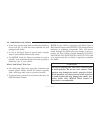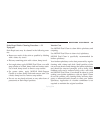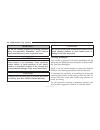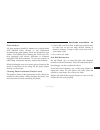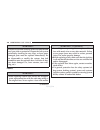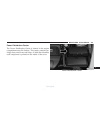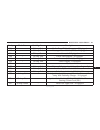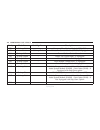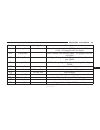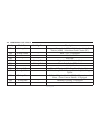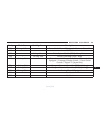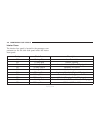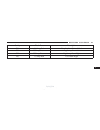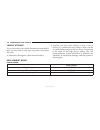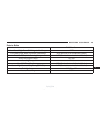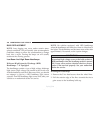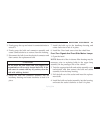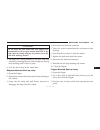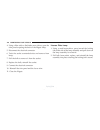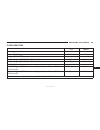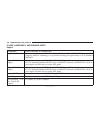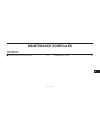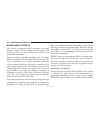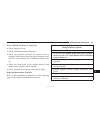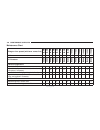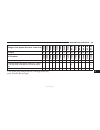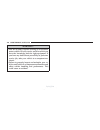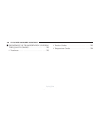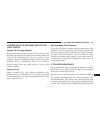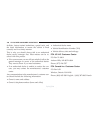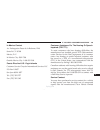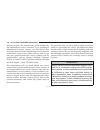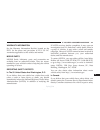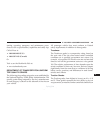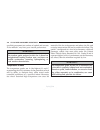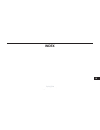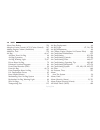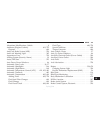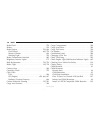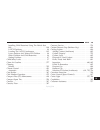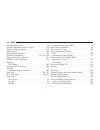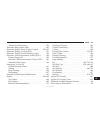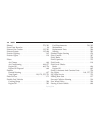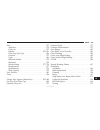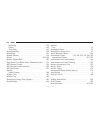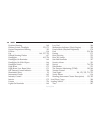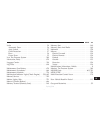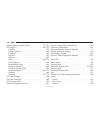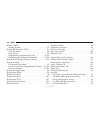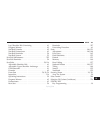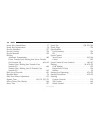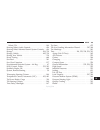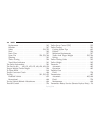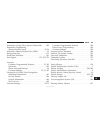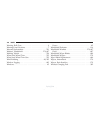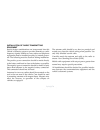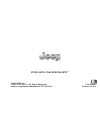- DL manuals
- Jeep
- Automobile
- 2016 CHEROKEE
- Owner's Manual
Jeep 2016 CHEROKEE Owner's Manual
Summary of 2016 CHEROKEE
Page 1
Cherokee o w n e r ’ s m a n u a l 20 16 cher ok ee 2 0 1 6 first edition rev 1 printed in u.S.A. Stick with the specialists ® 16kl74-126-aa ©2015 fca us llc. All rights reserved. Jeep is a registered trademark of fca us llc..
Page 2
Vehicles sold in canada with respect to any vehicles sold in canada, the name fca us llc shall be deemed to be deleted and the name fca canada inc. Used in substitution therefore. Driving and alcohol drunken driving is one of the most frequent causes of accidents. Your driving ability can be serious...
Page 3: Table Of Contents
Table of contents section page 1 introduction . . . . . . . . . . . . . . . . . . . . . . . . . . . . . . . . . . . . . . . . . . . . . . . . . . . . . . . . . . . . . . . 3 2 things to know before starting your vehicle . . . . . . . . . . . . . . . . . . . . . . . . . . . . . . . . . . 9 3 understa...
Page 5: Introduction
Introduction contents 䡵 introduction . . . . . . . . . . . . . . . . . . . . . . . .4 䡵 rollover warning . . . . . . . . . . . . . . . . . . .4 䡵 how to use this manual . . . . . . . . . . . . . .5 䡵 warnings and cautions . . . . . . . . . . . . . .7 䡵 vehicle identification number . . . . . . . .7 ...
Page 6
Introduction congratulations on selecting your new fca us llc vehicle. Be assured that it represents precision workman- ship, distinctive styling, and high quality - all essentials that are traditional to our vehicles. This owner’s manual has been prepared with the assis- tance of service and engine...
Page 7
Control. Failure to operate this vehicle safely may result in a collision, rollover of the vehicle, and severe or fatal injury. Drive carefully. Failure to use the driver and passenger seat belts pro- vided is a major cause of severe or fatal injury. In fact, the u.S. Government notes that the unive...
Page 8
6 introduction.
Page 9
Warnings and cautions this owner’s manual contains warnings against oper- ating procedures that could result in a collision or bodily injury. It also contains cautions against procedures that could result in damage to your vehicle. If you do not read this entire owner’s manual, you may miss importan...
Page 10
Note: it is illegal to remove or alter the vin. Vehicle modifications/alterations warning! Any modifications or alterations to this vehicle could seriously affect its roadworthiness and safety and may lead to a collision resulting in serious injury or death. Right front body vin location 8 introduct...
Page 11: Contents
Things to know before starting your vehicle contents 䡵 a word about your keys . . . . . . . . . . . . .12 ▫ ignition node module (ignm) — if equipped. .12 ▫ keyless push button ignition . . . . . . . . . . . . . .13 ▫ key fob — if equipped . . . . . . . . . . . . . . . . . .14 ▫ ignition or accessor...
Page 12
▫ using the panic alarm . . . . . . . . . . . . . . . . . .25 ▫ programming additional transmitters . . . . . . .26 ▫ transmitter battery replacement . . . . . . . . . . .26 ▫ general information . . . . . . . . . . . . . . . . . . . .29 䡵 remote starting system — if equipped . . . . . . . . . . . ....
Page 13
▫ wind buffeting . . . . . . . . . . . . . . . . . . . . . . .48 䡵 liftgate . . . . . . . . . . . . . . . . . . . . . . . . . . . .48 ▫ power liftgate — if equipped . . . . . . . . . . . . .50 䡵 occupant restraint systems . . . . . . . . . .52 ▫ important safety precautions . . . . . . . . . . . . ....
Page 14
A word about your keys your vehicle uses either a key start ignition system or keyless ignition system. The key start ignition system consists of a either a key fob with remote keyless entry (rke) transmitter and an ignition node module (ignm). The keyless ignition system consists of a key fob with ...
Page 15
Keyless push button ignition this feature allows the driver to operate the ignition with the push of a button as long as the remote keyless entry (rke) transmitter is in the passenger compartment. The keyless push button ignition has four operating positions, three of which are labeled and will illu...
Page 16
Key fob — if equipped the key fob also contains the remote keyless entry (rke) transmitter and an emergency key, which stores in the rear of the key fob. The emergency key allows for entry into the vehicle should the battery in the vehicle or the key fob go dead. You can keep the emergency key with ...
Page 17
Note: you can insert the double-sided emergency key into the lock cylinders with either side up. Ignition or accessory on message when opening the driver’s door when the ignition is in acc or on/run (engine not running), a chime will sound to remind you to place the ignition in the off position. In ...
Page 18
Warning! • when leaving the vehicle, always remove the key fob from the vehicle and lock your vehicle. If equipped with keyless enter-n-go, always make sure the keyless ignition node is in “off” mode, remove the key fob from the vehicle and lock the vehicle. • never leave children alone in a vehicle...
Page 19
General information the following regulatory statement applies to all radio frequency (rf) devices equipped in this vehicle: this device complies with part 15 of the fcc rules and with industry canada licence-exempt rss standard(s). Operation is subject to the following two conditions: 1. This devic...
Page 20
It indicates that someone tried to use an invalid key fob to start the engine. Either of these conditions will result in the engine being shut off after two seconds. If the vehicle security light turns on during normal vehicle operation (vehicle running for longer than 10 seconds), it indicates that...
Page 21
Note: duplication of key fobs may be performed at an authorized dealer. This procedure consists of program- ming a blank key fob to the vehicle electronics. A blank key fob is one that has never been programmed. When having the sentry key immobilizer system serviced, bring all vehicle keys with you ...
Page 22
• the park lamps and/or turn signals will flash. • the vehicle security light in the instrument cluster will flash. Rearming of the system if something triggers the alarm, and no action is taken to disarm it, the vehicle security alarm will turn the horn off after three minutes, turn all of the visu...
Page 23
To disarm the system the vehicle security alarm can be disarmed using any of the following methods: • push the unlock button on the remote keyless entry (rke) transmitter. • grasp the passive entry unlock door handle with a valid key fob available in the same exterior zone (if equipped). Refer to ⬙ ...
Page 24
System will give you a false alarm. If one of the previ- ously described arming sequences has occurred, the vehicle security alarm will arm regardless of whether you are in the vehicle or not. If you remain in the vehicle and open a door, the alarm will sound. If this occurs, disarm the vehicle secu...
Page 25
Note: • the front courtesy overhead console and door cour- tesy lights do not turn on if the dimmer control is in the “dome defeat” position (extreme bottom position). • the illuminated entry system will not operate if the dimmer control is in the “dome defeat” position (extreme bottom position). Re...
Page 26
To unlock the doors and liftgate push and release the unlock button on the rke transmitter once to unlock the driver’s door or twice within five seconds to unlock all doors and liftgate. The turn signal lights will flash to acknowledge the unlock signal. The illuminated entry system will also turn o...
Page 27
Headlight illumination on approach this feature activates the headlights for up to 90 seconds when the doors are unlocked with the rke transmitter. The time for this feature is programmable on vehicles equipped through uconnect. To change the current set- ting, refer to “uconnect settings” in “under...
Page 28
Note: • the interior lights will turn off if you place the ignition in the acc or on/run position while the panic alarm is activated. However, the exterior lights and horn will remain on. • you may need to be less than 35 ft (11 m) from the vehicle when using the rke transmitter to turn off the pani...
Page 29
2. Separating rke halves requires screw removal (if equipped) and gently prying the two halves of the rke transmitter apart with the emergency key. Make sure not to damage the seal during removal. Emergency key removal (ignm) emergency key removal 2 things to know before starting your vehicle 27.
Page 30
Remove screw from transmitter case separating ignition node module (ignm) transmitter case 28 things to know before starting your vehicle.
Page 31
3. Remove the battery by turning the back cover over (battery facing downward) and tapping it lightly on a solid surface such as a table or similar, and then replace the battery. When replacing the battery, match the + sign on the battery to the + sign on the inside of the battery clip, located on t...
Page 32
Note: changes or modifications not expressly approved by the party responsible for compliance could void the user’s authority to operate the equipment. Remote starting system — if equipped this system uses the remote keyless entry (rke) transmitter to start the engine conve- niently from outside the...
Page 33
• vehicle alarm system indicator flashing • ignition in stop/off position • fuel level meets minimum requirement warning! • do not start or run an engine in a closed garage or confined area. Exhaust gas contains carbon mon- oxide (co) which is odorless and colorless. Carbon monoxide is poisonous and...
Page 34
To enter remote start mode push and release the remote start button on the rke transmitter twice within five seconds. The vehicle doors will lock, the parking lights will flash, and the horn will chirp twice (if programmed). Then, the engine will start, and the vehicle will remain in the remote star...
Page 35
Doors and disarm the vehicle security alarm (if equipped). Then, prior to the end of the 15-minute cycle, push and release the start/stop button. If the start/ stop button is not present, insert the key fob into the ignition switch and turn the switch to the on/run position. Note: • for vehicles not...
Page 36
Remote start windshield wiper de–icer activation — if equipped when remote start is active and the outside ambient temperature is less than 40° f (4.4° c), the windshield wiper de-icer will be enabled. Exiting remote start will resume previous operation, except if the windshield wiper de-icer is act...
Page 37
Note: the manual door locks will not lock or unlock the liftgate. Warning! • for personal security and safety in the event of a collision, lock the vehicle doors before you drive as well as when you park and leave the vehicle. • when leaving the vehicle, always remove the key fob from the vehicle an...
Page 38
The doors can also be locked and unlocked with the keyless enter-n-go (passive entry) system. Refer to “keyless enter-n-go” in “things to know before start- ing your vehicle” for further information. If you push the power door lock switch while the ignition is in the acc or on/run position, and any ...
Page 39
Automatic unlock doors on exit the doors will unlock automatically on vehicles with power door locks if: 1. The automatic unlock doors on exit feature is en- abled. 2. All doors are closed. 3. The transmission shift lever was not in park, then is placed in park. 4. Any door is opened. Automatic unlo...
Page 40
Note: • when the child lock system is engaged, the door can be opened only by using the outside door handle even though the inside door lock is in the unlocked position. • after disengaging the child-protection door lock system, always test the door from the inside to make certain it is in the desir...
Page 41
Warning! Avoid trapping anyone in a vehicle in a collision. Remember that the rear doors can only be opened from the outside when the child-protection locks are engaged. Keyless enter-n-go the passive entry system is an enhancement to the vehicle’s remote keyless entry (rke) system and a feature of ...
Page 42
Note: if “unlock all doors 1st press” is programmed all doors will unlock when you grab hold of the front driver’s door handle. To select between “unlock driver door 1st press” and “unlock all doors 1st press,” refer to “uconnect settings” in “understanding your instrument panel” for further informa...
Page 43
Fobik-safe only executes in vehicles with passive entry. There are three situations that trigger a fobik-safe search in any passive entry vehicle: • a lock request is made by a valid passive entry rke transmitter while a door is open. • a lock request is made by the passive entry door handle while a...
Page 44
Note: if “unlock all doors 1st press” is programmed in evic/did (if equipped), all doors will unlock when you push the electronic release on the liftgate. If ⬙ unlock driver door 1st press ⬙ is programmed in uconnect, the liftgate will unlock when you push the electronic release on the liftgate. Ref...
Page 45
Do not grab the door handle, when pushing the door handle lock button. This could unlock the door(s). Push the door handle button to lock do not grab the door handle when locking 2 things to know before starting your vehicle 43.
Page 46
Note: • after pushing the door handle button, you must wait two seconds before you can lock or unlock the doors, using either passive entry door handle. This is done to allow you to check if the vehicle is locked by pulling the door handle without the vehicle reacting and unlocking. • if passive ent...
Page 47
Windows power windows the window controls on the driver’s door control all the door windows. There are single window controls on each passenger door trim panel, which operate the passenger door windows. The window controls will operate only when the ignition is in the acc or on/run position. Note: f...
Page 48
Warning! (continued) ignition of a vehicle equipped with keyless enter- n-go in the acc or on/run mode. Occupants, particularly unattended children, can become en- trapped by the windows while operating the power window switches. Such entrapment may result in serious injury or death. Auto-down featu...
Page 49
• any impact due to rough road conditions may trigger the auto-reverse function unexpectedly during auto- closure. If this happens, pull the switch lightly to the first detent and hold to close the window manually. Warning! There is no anti-pinch protection when the window is almost closed. Be sure ...
Page 50
Wind buffeting wind buffeting can be described as the perception of pressure on the ears or a helicopter-type sound in the ears. Your vehicle may exhibit wind buffeting with the windows down, or the sunroof in certain open or par- tially open positions. This is a normal occurrence and can be minimiz...
Page 51
Note: if “unlock all doors 1st press” is programmed in evic/did if equipped, all doors will unlock when you push the electronic release on the liftgate. If ⬙ unlock driver door 1st press ⬙ is programmed in uconnect, the liftgate will unlock when you push the electronic release on the liftgate. Refer...
Page 52
Warning! Driving with the liftgate open can allow poisonous exhaust gases into your vehicle. You and your pas- sengers could be injured by these fumes. Keep the liftgate closed when you are operating the vehicle. Power liftgate — if equipped the power liftgate may be opened by pushing the electronic...
Page 53
Note: • in the event of a power malfunction to the liftgate, an emergency liftgate latch release can be used to open the liftgate. The emergency liftgate latch release can be accessed through a snap-in cover located on the lift- gate trim panel. • if liftgate is left open for an extended period of t...
Page 54
• the power liftgate must be in the full open position for rear liftgate close button on the left rear trim, near the liftgate opening to operate. If the liftgate is not fully open, push the liftgate button on the key fob to fully open the liftgate and then push it again to close. • if the electroni...
Page 55
Important safety precautions please pay close attention to the information in this section. It tells you how to use your restraint system properly, to keep you and your passengers as safe as possible. Here are some simple steps you can take to minimize the risk of harm from a deploying air bag: 1. C...
Page 56
Side air bags will inflate forcefully into the space between occupants and the door and occupants could be injured. 9. If the air bag system in this vehicle needs to be modified to accommodate a disabled person, contact the customer center. Phone numbers are provided under ⬙ if you need assistance. ...
Page 57
Their seat belts. The belt alert feature is active when- ever the ignition switch is in the start or on/run position. Initial indication if the driver is unbuckled when the ignition switch is first turned to the start or on/run position, an intermittent chime will signal for a few seconds. If the dr...
Page 58
The outboard front passenger seat beltalert is not active when the outboard front passenger seat is unoccupied. Beltalert may be triggered when an animal or heavy object is on the outboard front passenger seat or when the seat is folded flat (if equipped). It is recommended that pets be restrained i...
Page 59
Warning! (continued) • in a collision, you and your passengers can suffer much greater injuries if you are not properly buck- led up. You can strike the interior of your vehicle or other passengers, or you can be thrown out of the vehicle. Always be sure you and others in your vehicle are buckled up...
Page 60
Warning! (continued) seat belt is flat against your body, without twists. If you can’t straighten a seat belt in your vehicle, take it to your authorized dealer immediately and have it fixed. • a seat belt that is buckled into the wrong buckle will not protect you properly. The lap portion could rid...
Page 61
Lap/shoulder belt operating instructions 1. Enter the vehicle and close the door. Sit back and adjust the seat. 2. The seat belt latch plate is above the back of the front seat, and next to your arm in the rear seat (for vehicles equipped with a rear seat). Grasp the latch plate and pull out the sea...
Page 62
4. Position the lap belt so that it is snug and lies low across your hips, below your abdomen. To remove slack in the lap belt portion, pull up on the shoulder belt. To loosen the lap belt if it is too tight, tilt the latch plate and pull on the lap belt. A snug seat belt reduces the risk of sliding...
Page 63
Stowed position. If necessary, slide the latch plate down the webbing to allow the seat belt to retract fully. Lap/shoulder belt untwisting procedure use the following procedure to untwist a twisted lap/ shoulder belt. 1. Position the latch plate as close as possible to the anchor point. 2. At about...
Page 64
As a guide, if you are shorter than average, you will prefer the shoulder belt anchorage in a lower position, and if you are taller than average, you will prefer the shoulder belt anchorage in a higher position. After you release the anchorage button, try to move it up or down to make sure that it i...
Page 65
Seat belts and pregnant women seat belts must be worn by all occupants including pregnant women: the risk of injury in the event of an accident is reduced for the mother and the unborn child if they are wearing a seat belt. Position the lap belt snug and low below the abdomen and across the strong b...
Page 66
The pretensioners are triggered by the occupant re- straint controller (orc). Like the air bags, the preten- sioners are single use items. A deployed pretensioner or a deployed air bag must be replaced immediately. Energy management feature this vehicle has a seat belt system with an energy manageme...
Page 67
Around the occupant’s mid-section so as to not activate the alr. If the alr is activated, you will hear a clicking sound as the seat belt retracts. Allow the webbing to retract completely in this case and then carefully pull out only the amount of webbing necessary to comfortably wrap around the occ...
Page 68
How to disengage the automatic locking mode unbuckle the combination lap/shoulder belt and allow it to retract completely to disengage the automatic locking mode and activate the vehicle sensitive (emergency) locking mode. Warning! • the seat belt assembly must be replaced if the switchable automati...
Page 69
• supplemental knee air bags • front and side impact sensors • seat belt pretensioners • seat belt buckle switch • seat track position sensors • occupant classification system advanced front air bags this vehicle has advanced front air bags for both the driver and front passenger as a supplement to ...
Page 70
Warning! • being too close to the steering wheel or instrument panel during advanced front air bag deployment could cause serious injury, including death. Air bags need room to inflate. Sit back, comfortably extending your arms to reach the steering wheel or instrument panel. • never place a rear-fa...
Page 71
Warning! • no objects should be placed over or near the air bag on the instrument panel or steering wheel, because any such objects could cause harm if the vehicle is in a collision severe enough to cause the air bags to inflate. • do not put anything on or around the air bag covers or attempt to op...
Page 72
Seat belts are necessary for your protection in all colli- sions, and also are needed to help keep you in position, away from an inflating air bag. When the orc detects a collision requiring the ad- vanced front air bags, it signals the inflator units. A large quantity of non-toxic gas is generated ...
Page 73
Weight on the seat will be sensed by the sensor. The ocm uses input from the sensor to determine the front pas- senger’s most probable classification. The ocm commu- nicates this information to the orc. The orc may reduce the inflation rate of the passenger advanced front air bag deployment based on...
Page 74
* it is possible for a child to be classified as an adult, allowing a full-power passenger advanced front air bag deployment. Never allow children to ride in the front passenger seat and never install a child restraint system, including a rear-facing child restraint, in the front pas- senger seat. W...
Page 75
Lighter weight passengers (including small adults) when a lighter weight passenger, including a small adult, occupies the front passenger seat, the ocs may reduce the inflation rate of the passenger advanced front air bag. This does not mean that the ocs is working improperly. Do not decrease or inc...
Page 76
Examples of improper front passenger seating include: • the front passenger’s weight is transferred to another part of the vehicle (like the door, arm rest or instru- ment panel). • the front passenger leans forward, sideways, or turns to face the rear of the vehicle. • the front passenger’s seatbac...
Page 77
Not seated properly not seated properly 2 things to know before starting your vehicle 75.
Page 78
Not seated properly not seated properly 76 things to know before starting your vehicle.
Page 79
Warning! • if an occupant in the front passenger seat is seated improperly, the occupant may provide an output signal to the ocs that is different from the occu- pant’s properly seated weight input. This may result in serious injury or death in a collision. • always wear your seat belt and sit prope...
Page 80
Classify the seated weight of a front seat passenger, the ocs components must function as designed. Do not make any modifications to the front passenger seat components, assembly, or to the seat cover. If the seat, trim cover, or cushion needs service for any reason, take the vehicle to your authori...
Page 81
Knee impact bolsters the knee impact bolsters help protect the knees of the driver and front passenger, and position the front occu- pants for improved interaction with the advanced front air bags. Warning! • do not drill, cut, or tamper with the knee impact bolsters in any way. • do not mount any a...
Page 82
The sabs may help to reduce the risk of occupant injury during certain side impact and/or vehicle rollover events, in addition to the injury reduction potential provided by the seat belts and body structure. When the sab deploys, it opens the seam on the out- board side of the seatback’s trim cover ...
Page 83
The seam on the outboard side of the seat cushion’s trim cover (outboard rear seats — if equipped with rear sabs). The inflating sab deploys through the seat seam into the space between the occupant and the door. The sab moves at a very high speed and with such a high force that it could injure occu...
Page 84
Sabics may help reduce the risk of head or other injuries to front and rear seat outboard occupants in certain side impacts and/or vehicle rollover events, in addition to the injury reduction potential provided by the seat belts and body structure. The sabics deploy downward, covering the side win- ...
Page 85
The sabics and sabs (“side air bags”) are designed to activate in certain side impacts and certain rollover events. The occupant restraint controller (“orc”) de- termines whether the deployment of the side air bags in a particular side impact or rollover event is appropriate, based on the severity a...
Page 86
Warning! (continued) properly. In some collisions, side air bags won’t deploy at all. Always wear your seat belt even though you have side air bags. Note: air bag covers may not be obvious in the interior trim, but they will open during air bag deployment. Side impacts in side impacts, the side impa...
Page 87
Faster-developing event may deploy the seat belt preten- sioners as well as the side air bags on both sides of the vehicle. The rollover sensing-system may also deploy the seat belt pretensioners, with or without the side air bags, on both sides of the vehicle if the vehicle experiences a near rollo...
Page 88
Do not drive your vehicle after the air bags have de- ployed. If you are involved in another collision, the air bags will not be in place to protect you. Warning! Deployed air bags and seat belt pretensioners cannot protect you in another collision. Have the air bags, seat belt pretensioners, and th...
Page 89
Enhanced accident response system reset procedure in order to reset the enhanced accident response system functions after an event, the ignition switch must be changed from ignition start or on/run to ignition off. Carefully check the vehicle for fuel leaks in the engine compartment and on the groun...
Page 90
While the air bag system is designed to be maintenance free, if any of the following occurs, have an authorized dealer service the air bag system immediately. • the air bag warning light does not come on during the four to eight seconds when the ignition switch is first turned to the on/run position...
Page 91
Redundant air bag warning light if a fault with the air bag warning light is detected, which could affect the supplemental restraint system (“srs”), the redundant air bag warning light will illuminate on the in- strument panel. The redundant air bag warning light will stay on until the fault is clea...
Page 92
Warning! (continued) not function properly if modifications are made. Take your vehicle to an authorized dealer for any air bag system service. If your seat, including your trim cover and cushion, needs to be serviced in any way (including removal or loosening/tightening of seat attachment bolts), t...
Page 93
Note: edr data are recorded by your vehicle only if a non-trivial crash situation occurs; no data are recorded by the edr under normal driving conditions and no per- sonal data (e.G., name, gender, age, and crash location) are recorded. However, other parties, such as law en- forcement, could combin...
Page 94
There are different sizes and types of restraints for children from newborn size to the child almost large enough for an adult safety belt. Always check the child seat owner’s manual to make sure you have the correct seat for your child. Carefully read and follow all the instructions and warnings in...
Page 95
Summary of recommendations for restraining children in vehicles child size, height, weight or age recommended type of child restraint infants and toddlers children who are two years old or younger and who have not reached the height or weight limits of their child restraint either an infant carrier ...
Page 96
Infants and child restraints safety experts recommend that children ride rear-facing in the vehicle until they are two years old or until they reach either the height or weight limit of their rear-facing child restraint. Two types of child restraints can be used rear-facing: infant carriers and conv...
Page 97
Remain in a forward-facing child seat with a harness for as long as possible, up to the highest weight or height allowed by the child seat. All children whose weight or height is above the forward-facing limit for the child seat should use a belt-positioning booster seat until the vehicle’s seat bel...
Page 98
Children too large for booster seats children who are large enough to wear the shoulder belt comfortably, and whose legs are long enough to bend over the front of the seat when their back is against the seatback, should use the seat belt in a rear seat. Use this simple 5-step test to decide whether ...
Page 99
Recommendations for attaching child restraints restraint type combined weight of the child + child restraint use any attachment method shown with an “x” below latch – lower anchors only seat belt only latch – lower anchors + top tether anchor seat belt + top tether anchor rear-facing child restraint...
Page 100
Lower anchors and tethers for children (latch) restraint system your vehicle is equipped with the child restraint anchor- age system called latch, which stands for lower anchors and tethers for children. The latch system has three vehicle anchor points for installing latch- equipped child seats. The...
Page 101
Latch positions for installing child restraints in this vehicle • lower anchorage symbol 2 anchorages per seating position • top tether anchorage symbol 2 things to know before starting your vehicle 99.
Page 102
Frequently asked questions about installing child restraints with latch what is the weight limit (child’s weight + weight of the child restraint) for using the latch anchorage system to attach the child restraint? 65 lbs (29.5 kg) use the latch anchorage system until the combined weight of the child...
Page 103
Frequently asked questions about installing child restraints with latch can two child restraints be attached using a common lower latch anchorage? No never “share” a latch anchorage with two or more child restraints. If the center position does not have dedicated latch lower an- chorages, use the se...
Page 104
Locating latch anchorages the lower anchorages are round bars that are found at the rear of the seat cushion where it meets the seatback. They are just visible when you lean into the rear seat to install the child restraint. You will easily feel them if you run your finger along the gap between the ...
Page 105
Latch-compatible child restraint systems will be equipped with a rigid bar or a flexible strap on each side. Each will have a hook or connector to attach to the lower anchorage and a way to tighten the connection to the anchorage. Forward-facing child restraints and some rear-facing child restraints...
Page 106
Can use either the latch anchors or the vehicle’s seat belt for installing the third child seat in position (1) behind the front passenger. Options for installing two child seats using the latch anchorages in this vehicle: 1. Right and left outboard seating positions (1 and 3): install the child sea...
Page 107
Warning! • use anchorages c and d to install a latch- compatible child restraint in the center seating position (2). Do not install a latch-compatible child restraint using anchorages b and c. This is not a latch-compatible position in your vehicle. • a child restraint installed in the center positi...
Page 108
1. Loosen the adjusters on the lower straps and on the tether strap of the child seat so that you can more easily attach the hooks or connectors to the vehicle anchorages. 2. Place the child seat between the lower anchorages for that seating position. For some second row seats, you may need to recli...
Page 109
How to stow an unused alr seat belt: when using the latch attaching system to install a child restraint, stow all alr seat belts that are not being used by other occupants or being used to secure child restraints. An unused belt could injure a child if they play with it and accidentally lock the sea...
Page 110
Installing child restraints using the vehicle seat belt the seat belts in the passenger seating positions are equipped with a switchable automatic locking retractor (alr) that is designed to keep the lap portion of the seat belt tight around the child restraint so that it is not necessary to use a l...
Page 111
Frequently asked questions about installing child restraints with seat belts what is the weight limit (child’s weight + weight of the child re- straint) for using the tether anchor with the seat belt to attach a for- ward facing child restraint? Weight limit of the child restraint always use the tet...
Page 112
Installing a child restraint with a switchable automatic locking retractor (alr) 1. Place the child seat in the center of the seating position. For some second row seats, you may need to recline the seat and/or raise the head restraint to get a better fit. If the rear seat can be moved forward and r...
Page 113
Strap. See the section “installing child restraints using the top tether anchorage” for directions to attach a tether anchor. 9. Test that the child restraint is installed tightly by pulling back and forth on the child seat at the belt path. It should not move more than 1 inch (25.4 mm) in any direc...
Page 114
Tether anchorage for that seating position, move the child restraint to another position in the vehicle if one is available. 2. Route the tether strap to provide the most direct path for the strap between the anchor and the child seat. If your vehicle is equipped with adjustable rear head restraints...
Page 115
Warning! • an incorrectly anchored tether strap could lead to increased head motion and possible injury to the child. Use only the anchorage position directly behind the child seat to secure a child restraint top tether strap. • if your vehicle is equipped with a split rear seat, make sure the tethe...
Page 116
Caution! Never use non-detergent oil or straight mineral oil in the engine or damage may result. Note: a new engine may consume some oil during its first few thousand miles (kilometers) of operation. This should be considered a normal part of the break-in and not interpreted as a problem. Safety tip...
Page 117
Exhaust gas warning! Exhaust gases can injure or kill. They contain carbon monoxide (co), which is colorless and odorless. Breathing it can make you unconscious and can eventually poison you. To avoid breathing (co), follow these safety tips: • do not run the engine in a closed garage or in confined...
Page 118
Safety checks you should make inside the vehicle seat belts inspect the seat belt system periodically, checking for cuts, frays, and loose parts. Damaged parts must be replaced immediately. Do not disassemble or modify the system. Front seat belt assemblies must be replaced after a collision. Rear s...
Page 119
Cannot slip out of position and interfere with the pedals or impair safe operation of your vehicle in other ways. Warning! Pedals that cannot move freely can cause loss of vehicle control and increase the risk of serious per- sonal injury. • always make sure that floor mats are properly attached to ...
Page 120
Periodic safety checks you should make outside the vehicle tires examine tires for excessive tread wear and uneven wear patterns. Check for stones, nails, glass, or other objects lodged in the tread or sidewall. Inspect the tread for cuts and cracks. Inspect sidewalls for cuts, cracks, and bulges. C...
Page 121: Contents
Understanding the features of your vehicle contents 䡵 mirrors . . . . . . . . . . . . . . . . . . . . . . . . . . . .126 ▫ inside day/night mirror — if equipped . . . .126 ▫ assist and 9–1–1 rearview mirror — if equipped . . . . . . . . . . . . . . . . . . . . . . . . . . .126 ▫ outside mirrors . . ...
Page 122
▫ head restraints . . . . . . . . . . . . . . . . . . . . . .153 ▫ 60/40 split folding rear seat with fold-flat feature . . . . . . . . . . . . . . . . . . . . . . . . . . . .157 䡵 driver memory seat — if equipped . . . .160 ▫ programming the memory feature . . . . . . . . .160 ▫ linking and unlinki...
Page 123
▫ flash-to-pass . . . . . . . . . . . . . . . . . . . . . . . .171 ▫ front map/reading lights . . . . . . . . . . . . . . .171 ▫ interior lights . . . . . . . . . . . . . . . . . . . . . . .172 ▫ battery saver feature . . . . . . . . . . . . . . . . . .174 䡵 windshield wipers and washers . . . . . ....
Page 124
▫ to activate/deactivate. . . . . . . . . . . . . . . . . .191 ▫ to set a desired acc speed . . . . . . . . . . . . .192 ▫ to cancel . . . . . . . . . . . . . . . . . . . . . . . . . . .193 ▫ to turn off . . . . . . . . . . . . . . . . . . . . . . . . . .193 ▫ to resume . . . . . . . . . . . . . . ....
Page 125
▫ changing lanesense status . . . . . . . . . . . . . .229 䡵 parksense rear park assist — if equipped . . . . . . . . . . . . . . . . . . . . . . . . . . .229 ▫ parksense sensors . . . . . . . . . . . . . . . . . . . . .230 ▫ parksense warning display . . . . . . . . . . . . . .230 ▫ parksense displ...
Page 126
䡵 parkview rear back up camera — if equipped . . . . . . . . . . . . . . . . . . . . . . . . . . .280 䡵 garage door opener — if equipped . . .282 ▫ before you begin programming homelink . . .283 ▫ programming a rolling code . . . . . . . . . . . . .284 ▫ programming a non-rolling code . . . . . . . ...
Page 127
䡵 power inverter — if equipped . . . . . . . .300 䡵 wireless charging pad — if equipped . . . . . . . . . . . . . . . . . . . . . . . . . . .302 ▫ wireless charging pad operation . . . . . . . . . .303 䡵 cupholders . . . . . . . . . . . . . . . . . . . . . . . .305 䡵 storage . . . . . . . . . . . . ...
Page 128
Mirrors inside day/night mirror — if equipped the mirror head can be adjusted up, down, left, and right for various drivers. The mirror should be adjusted to center on the view through the rear window. Headlight glare from vehicles behind you can be reduced by moving the small control under the mirr...
Page 129
Left, and right for various drivers. The mirror should be adjusted to center on the view through the rear window. Note: the automatic dimming mirror feature is dis- abled when the vehicle is in reverse gear to improve rear view viewing. The automatic dimming mirror feature can be turned on or off th...
Page 130
Warning! Always obey traffic laws and pay attention to the road. Some uconnect access services, including 9-1-1 and assist, will not work without an operable 1x (voice/data) or 3g (data) network connection. Note: • your vehicle may be transmitting data as authorized by the subscriber. • the 9–1–1 an...
Page 131
Note: in case the 9-1-1 call button is pushed in error, there will be a 10 second delay before the 9-1-1 call system initiates a call to a 9-1-1 operator. To cancel the 9-1-1 call connection, push the 9-1-1 call button on the rearview mirror or press the cancellation button on the device screen. Ter...
Page 132
Note: • your vehicle may be transmitting data as authorized by the subscriber. • once a connection is made between the vehicle’s 9-1-1 call system and the 9-1-1 operator, the 9-1-1 operator may be able to open a voice connection with the vehicle to determine if additional help is needed. Once the 9-...
Page 133
Warning! (continued) electrical equipment to the vehicle’s electrical sys- tem. This may prevent your vehicle from sending a signal to initiate an emergency call. To avoid inter- ference that can cause the 9-1-1 call system to fail, never add aftermarket equipment (e.G., two-way mobile radio, cb rad...
Page 134
Warning! • ignoring the rearview mirror light could mean you will not have 9-1-1 call services. If the rearview mirror light is illuminated, have an authorized dealer service the 9-1-1 call system immediately. • the occupant restraint control module turns on the air bag warning light on the instrume...
Page 135
Warning! Always obey traffic laws and pay attention to the road. Some uconnect access services, including 9-1-1 and assist, will not work without an operable 1x (voice/data) or 3g (data) network connection. Note: • your vehicle may be transmitting data as authorized by the subscriber. • never place ...
Page 136
Note: the passenger side convex outside mirror will give a much wider view to the rear, and especially of the lane next to your vehicle. Warning! Vehicles and other objects seen in the passenger side convex mirror will look smaller and farther away than they really are. Relying too much on your pass...
Page 137
To move the mirror in the direction the arrow is pointing. The selection will time out after 30 seconds of inactivity to guard against accidentally moving a mirror position following an adjustment. Note: for vehicles equipped with driver memory seat, you can use your remote keyless entry (rke) trans...
Page 138
If the mirrors are in the folded position, and vehicle speed is equal or greater than 10 mph (16 km/h), they will automatically unfold. Resetting the power folding outside mirrors you may need to reset the power folding mirrors if the following occurs: • the mirrors are accidentally blocked while fo...
Page 139
Sun visor “slide-on-rod” feature — if equipped the sun visor “slide-on-rod” feature allows for addi- tional flexibility in positioning the sun visor to block out the sun. 1. Fold down the sun visor. 2. Unclip the visor from the center clip. 3. Pull the sun visor toward the inside rearview mirror to ...
Page 140
When the vehicle is started, the bsm warning light will momentarily illuminate in both outside rear view mirrors to let the driver know that the system is operational. The bsm system sensors operate when the vehicle is in any forward gear or reverse and enters stand-by mode when the vehicle is in pa...
Page 141
Beyond the side of your vehicle, this may result in the bsm warning light remaining illuminated the entire time the vehicle is in a forward gear. The area on the rear fascia where the radar sensors are located must remain free of snow, ice, and dirt/road contamination so that the bsm system can func...
Page 142
Entering from the side vehicles that move into your adjacent lanes from either side of the vehicle. Entering from the rear vehicles that come up from behind your vehicle on either side and enter the rear detection zone with a relative speed of less than 30 mph (48 km/h). Side monitoring rear monitor...
Page 143
Overtaking traffic if you pass another vehicle slowly with a relative speed less than 10 mph (16 km/h) and the vehicle remains in the blind spot for approximately 1.5 seconds, the warning light will be illuminated. If the difference in speed between the two vehicles is greater than 10 mph (16 km/h),...
Page 144
The bsm system is designed not to issue an alert on stationary objects such as guardrails, posts, walls, foliage, berms, etc. However, occasionally the system may alert on such objects. This is normal operation and your vehicle does not require service. The bsm system will not alert you of objects t...
Page 145
Warning! The blind spot monitoring system is only an aid to help detect objects in the blind spot zones. The bsm (continued) warning! (continued) system is not designed to detect pedestrians, bicy- clists, or animals. Even if your vehicle is equipped with the bsm system, always check your vehicles m...
Page 146
Rcp monitors the rear detection zones on both sides of the vehicle, for objects that are moving toward the side of the vehicle with a minimum speed of approximately 3 mph (5 km/h), to objects moving a maximum of approximately 20 mph (32 km/h), such as in parking lot situations. Note: in a parking lo...
Page 147
Modes of operation three selectable modes of operation are available in the uconnect system. Refer to “uconnect settings/customer programmable features” in “understanding your instru- ment panel” for further information. Blind spot alert lights only when operating in blind spot alert mode, the bsm s...
Page 148
Note: the bsm system will store the current operating mode when the vehicle is shut off. Each time the vehicle is started the previously stored mode will be recalled and used. General information this vehicle has systems that operate on radio frequency that comply with part 15 of the federal communi...
Page 149
Power seats — if equipped some models may be equipped with a power driver’s seat. The power seat switch is located on the outboard side of the seat near the floor. Use the switch to move the seat up, down, forward or rearward. Reclining the seatback forward or rearward the seatback can be reclined b...
Page 150
Warning! Do not ride with the seatback reclined so that the shoulder belt is no longer resting against your chest. In a collision you could slide under the seat belt, which could result in serious injury or death. Power lumbar — if equipped vehicles equipped with power driver or passenger seats may ...
Page 151
While sitting in the seat, lift up on the bar and move the seat forward or rearward. Release the bar once you have reached the desired position. Then, using body pressure, move forward and rearward on the seat to be sure that the seat adjusters have latched. Warning! • adjusting a seat while driving...
Page 152
Warning! Do not ride with the seatback reclined so that the shoulder belt is no longer resting against your chest. In a collision you could slide under the seat belt, which could result in serious injury or death. Manual seat height adjustment — if equipped the driver’s seat height can be raised or ...
Page 153
Front heated seats — if equipped the front heated seats control buttons are located within the uconnect system. You can gain access to the control buttons through the climate screen or the controls screen. • press the heated seat button once to turn the hi setting on. • press the heated seat button ...
Page 154
Warning! (continued) even at low temperatures, especially if used for long periods of time. • do not place anything on the seat or seatback that insulates against heat, such as a blanket or cushion. This may cause the seat heater to overheat. Sitting in a seat that has been overheated could cause se...
Page 155
This feature can be programmed through the uconnect system. Refer to “uconnect settings” in “understanding your instrument panel” for further information. Head restraints head restraints are designed to reduce the risk of injury by restricting head movement in the event of a rear impact. Head restra...
Page 156
Note: to remove the head restraint, raise it as far as it can go then push the release button and the adjustment button at the base of each post while pulling the head restraint up. Seatback angle may need to be adjusted to fully remove the head restraint. To reinstall the head restraint, put the he...
Page 157
Warning! • a loose head restraint thrown forward in a colli- sion or hard stop could cause serious injury or death to occupants of the vehicle. Always securely stow removed head restraints in a location outside the occupant compartment. • all the head restraints must be reinstalled in the vehicle to...
Page 158
Outboard head restraint 1 — release button 2 — adjustment button center head restraint 1 — adjustment button 2 — release button 156 understanding the features of your vehicle.
Page 159
Warning! All the head restraints must be reinstalled in the vehicle to properly protect the occupants. Follow the re-installation instructions above prior to operating the vehicle or occupying a seat. 60/40 split folding rear seat with fold-flat feature to provide additional storage area, each rear ...
Page 160
To lower the rear seat 1. Lift the seatback release lever located on the upper outer edge of the seat or pull the pull strap located on the middle outer edge of the seat. 2. Fold the rear seatback completely forward. Rear seat adjustment bar rear seatback release lever and pull strap 158 understandi...
Page 161
To raise the rear seat note: if interference from the cargo area prevents the seatback from fully locking, you will have difficulty returning the seat to its proper position. Raise the seatback and lock it into place. Warning! Be certain that the seatback is securely locked into position. If the sea...
Page 162
Driver memory seat — if equipped this feature allows the driver to store up to two different memory profiles, for easy recall through a memory switch. Each memory profile contains desired position settings for the driver seat and side mirrors and a set of desired radio station presets. The memory sw...
Page 163
2. Adjust all memory profile settings to desired prefer- ences (i.E., seat, side mirror and radio station presets). 3. Push and release the set button on the memory switch, then push the number (1) button within five seconds. The electronic vehicle information center (evic) or driver information dis...
Page 164
Note: before programming your rke transmitters you must select the “memory to fob” feature through the uconnect system screen. Refer to “uconnect settings” in “understanding your instrument panel” for further in- formation. To program your rke transmitters, perform the follow- ing: 1. Cycle the vehi...
Page 165
A recall can be cancelled by pushing any of the memory buttons (s, 1, or 2) during a recall. When a recall is cancelled, the driver seat will stop moving. A delay of one second will occur before another recall can be selected. Easy entry/exit seat this feature provides automatic driver seat position...
Page 166
To open and close the hood two latches must be released to open the hood. 1. Pull the hood release lever located under the drivers side of the instrument panel. 2. Move to the outside of the vehicle and pull the safety latch release lever forward (toward you). The safety latch release lever is locat...
Page 167
Caution! To prevent possible damage, do not slam the hood to close it. Lower the hood until it is open approxi- mately 6 inches (15 cm), and then drop it. This should secure both latches. Never drive your vehicle unless the hood is fully closed, with both latches engaged. Warning! Be sure the hood i...
Page 168
Rotate the headlight switch clockwise to the first detent for parking light and instrument panel light operation. Rotate the headlight switch to the second detent for headlight, parking light and instrument panel light operation. Automatic headlights — if equipped this system automatically turns the...
Page 169
Is set to on. In addition, the headlights will turn off when the wipers are turned off if they were turned on by this feature. Note: the headlights on with wipers feature can be turned on or off using the uconnect system. Refer to “uconnect settings/customer programmable features” in “understanding ...
Page 170
Automatic high beam headlamp control — if equipped the automatic high beam headlamp control system provides increased forward lighting at night by automat- ing high beam control through the use of a digital camera mounted on the inside rearview mirror. This camera detects vehicle specific light and ...
Page 171
Note: if allowed by law in the country in which the vehicle was purchased the daytime running lights can be turned on and off using the uconnect system, refer to “uconnect settings” in “understanding your instrument panel” for further information. Lights-on reminder if the headlights or parking ligh...
Page 172
An indicator light in the instrument cluster illuminates when the fog lights are turned on. Note: the fog lights will operate with the low beam headlights or parking lights on. However, selecting the high beam headlights will turn off the fog lights. Multifunction lever the multifunction lever contr...
Page 173
Note: • if either light remains on and does not flash, or there is a very fast flash rate, check for a defective outside light bulb. If an indicator fails to light when the lever is moved, it would suggest that the indicator bulb is defective. • a “turn signal on” message will appear in the evic/ di...
Page 174
Switch on either side of the console. To turn the lights off, push the switch a second time. These lights also turn on when a door is opened, or when the unlock button on the remote keyless entry (rke) transmitter is pushed, or when the dimmer control is turned completely upward to the second detent...
Page 175
With the parking lights or headlights on, rotating the instrument panel dimmer control upward will increase the brightness of the instrument panel lights and lighted cupholders — if equipped. Ambient light control — if equipped rotate the ambient dimmer control upward or down- ward to increase or de...
Page 176
Dome light position rotate the instrument panel dimmer control completely upward to the second detent to turn on the interior lights. The interior lights will remain on when the instrument panel dimmer control is in this position. Interior light defeat (off) rotate the instrument panel dimmer contro...
Page 177
Windshield wiper operation rotate the end of the lever to one of the first four detent positions for intermittent settings, the fifth detent for low wiper operation and the sixth detent for high wiper operation. Caution! Always remove any buildup of snow that prevents the windshield wiper blades fro...
Page 178
Caution! (continued) turned off, and the blades cannot return to the “park” position, damage to the wiper motor may occur. Intermittent wiper system use one of the four intermittent wiper settings when weather conditions make a single wiping cycle, with a variable delay between cycles, desirable. At...
Page 179
While in the intermittent setting, the wipers will turn on and operate for several wipe cycles after the lever is released, and then resume the intermittent interval pre- viously selected. If the lever is pulled while the wipers are in the off position, the wipers will operate for several wipe cycle...
Page 180
Note: the mist feature does not activate the washer pump; therefore, no washer fluid will be sprayed on the windshield. The wash function must be used in order to spray the windshield with washer fluid. Windshield wiper de-icer — if equipped your vehicle may be equipped with a windshield wiper de-ic...
Page 181
• activation by remote start operation — when re- mote start is active and the outside ambient tempera- ture is less than 33° f (0.6° c), the windshield wiper de-icer shall be enabled. On exiting remote start resume previous operation except, if the windshield wiper de-icer timer and operation shall...
Page 182
The rain sensing system has protection features for the wiper blades and arms, and will not operate under the following conditions: • low ambient temperature — when the ignition is first turned on, the rain sensing system will not operate until the wiper switch is moved, vehicle speed is greater tha...
Page 183
To unlock the steering column, push the control handle downward (toward the floor). To tilt the steering column, move the steering wheel upward or downward as de- sired. To lengthen or shorten the steering column, pull the steering wheel outward or push it inward as desired. To lock the steering col...
Page 184
Steering wheel can shut off early or may not turn on when the steering wheel is already warm. The heated steering wheel control button is located within the uconnect system. You can gain access to the control button through the climate screen or the controls screen. • press the heated steering wheel...
Page 185
Electronic speed control — if equipped when engaged, the electronic speed control takes over accelerator operations at speeds greater than 25 mph (40 km/h). The electronic speed control buttons are located on the right side of the steering wheel. Electronic speed control buttons 1 — on/off 4 — set-/...
Page 186
Note: in order to ensure proper operation, the elec- tronic speed control system has been designed to shut down if multiple speed control functions are operated at the same time. If this occurs, the electronic speed control system can be reactivated by pushing the electronic speed control on/off but...
Page 187
To deactivate a soft tap on the brake pedal, pushing the cancel button, or normal brake pressure while slowing the vehicle will deactivate the electronic speed control with- out erasing the set speed from memory. Pushing the on/off button or turning the ignition switch off erases the set speed from ...
Page 188
• if the button is continually pushed, the set speed will continue to increase until the button is released, then the new set speed will be established. To decrease speed when the electronic speed control is set, you can de- crease speed by pushing the set - button. The drivers preferred units can b...
Page 189
Note: the electronic speed control system maintains speed up and down hills. A slight speed change on moderate hills is normal. On steep hills, a greater speed loss or gain may occur so it may be preferable to drive without electronic speed control. Warning! Electronic speed control can be dangerous...
Page 190
• if the acc sensor detects a vehicle ahead, acc will apply limited braking or acceleration (not to exceed the original set speed) automatically to maintain a preset following distance, while matching the speed of the vehicle ahead. The cruise control system has two control modes: • adaptive cruise ...
Page 191
Warning! (continued) • the acc system: • does not react to pedestrians, oncoming vehicles, and stationary objects (e.G., a stopped vehicle in a traffic jam or a disabled vehicle). • cannot take street, traffic, and weather condi- tions into account, and may be limited upon adverse sight distance con...
Page 192
Note: any chassis/suspension or tire size modifications to the vehicle will effect the performance of the adaptive cruise control and forward collision warning system. Activating adaptive cruise control (acc) you can only engage acc if the vehicle speed is above 0 mph (0 km/h). The minimum set speed...
Page 193
• when you apply the brakes. • when the parking brake is set. • when the automatic transmission is in park, re- verse or neutral. • when the vehicle speed is outside of the speed range. • when the brakes are overheated. • when the driver door is open. • when the driver seat belt is unbuckled. To act...
Page 194
Warning! Leaving the adaptive cruise control (acc) system on when not in use is dangerous. You could accidentally set the system or cause it to go faster than you want. (continued) warning! (continued) you could lose control and have a collision. Always leave the system off when you are not using it...
Page 195
Remove your foot from the accelerator pedal. If you do not, the vehicle may continue to accelerate beyond the set speed. If this occurs: • the message “driver override” will display in the evic/did. • the system will not be controlling the distance be- tween your vehicle and the vehicle ahead. The v...
Page 196
• the normal (fixed speed) electronic speed control on/off button is pushed. • the ignition is turned off. • you switch to four-wheel drive low. To resume if there is a set speed in memory push the res (resume) button and then remove your foot from the accelerator pedal. The evic/did will display th...
Page 197
The speed increment shown is dependant on the chosen speed unit of u.S. (mph) or metric (km/h): u.S. Speed (mph) • pushing the set + button once will result in a 1 mph increase in set speed. Each subsequent tap of the button results in an increase of 1 mph. • if the button is continually pushed, the...
Page 198
• if the button is continually pushed, the set speed will continue to decrease in 5 mph decrements until the button is released. The decrease in set speed is re- flected in the evic/did. Metric speed (km/h) • pushing the set - button once will result in a 1 km/h decrease in set speed. Each subsequen...
Page 199
Setting the following distance in acc the specified following distance for acc can be set by varying the distance setting between four bars (longest), three bars (long), two bars (medium) and one bar (short). Using this distance setting and the vehicle speed, acc calculates and sets the distance to ...
Page 200
Distance setting 3 bars (long) distance setting 2 bars (medium) 198 understanding the features of your vehicle.
Page 201
To increase the distance setting, push the distance setting — increase button and release. Each time the button is pushed, the distance setting increases by one bar (longer). To decrease the distance setting, push the distance set- ting — decrease button and release. Each time the button is pushed, ...
Page 202
• the system disengages. (refer to the information on acc activation). The maximum braking applied by acc is limited; how- ever, the driver can always apply the brakes manually, if necessary. Note: the brake lights will illuminate whenever the acc system applies the brakes. A proximity warning will ...
Page 203
Overtake aid when driving with acc engaged and following a ve- hicle, the system will provide an additional acceleration up to the acc set speed to assist in passing the vehicle. This additional acceleration is triggered when the driver utilizes the left turn signal and will only be active when pass...
Page 204
Adaptive cruise control (acc) menu the evic/did displays the current acc system set- tings. The evic/did is located in the center of the instrument cluster. The information it displays depends on acc system status. Push the adaptive cruise control (acc) on/ off button (located on the steering wheel)...
Page 205
Display warnings and maintenance “wipe front radar sensor in front of vehicle” warning the “acc/fcw unavailable wipe front radar sensor” warning will display and also a chime will indicate when conditions temporarily limit system performance. This most often occurs at times of poor visibility, such ...
Page 206
• do not remove any screws from the sensor. Doing so could cause an acc system malfunction or failure and require a sensor realignment. • if the sensor or front end of the vehicle is damaged due to a collision, see your authorized dealer for service. • do not attach or install any accessories near t...
Page 207
Obstructions, such as mud, dirt, or ice on windshield and fog on the inside of glass. In these cases, the evic/did will display “acc/fcw limited functionality clean front windshield” and the system will have degraded performance. The “acc/fcw limited functionality clean front windshield” message can...
Page 208
Precautions while driving with acc in certain driving situations, acc may have detection issues. In these cases, acc may brake late or unexpect- edly. The driver needs to stay alert and may need to intervene. Towing a trailer towing a trailer is not advised when using acc. Offset driving acc may not...
Page 209
The vehicle is out of the curve the system will resume your original set speed. This is a part of normal acc system functionality. Note: on tight turns acc performance may be limited. Using acc on hills when driving on hills, acc may not detect a vehicle in your lane. Depending on the speed, vehicle...
Page 210
Lane changing acc may not detect a vehicle until it is completely in the lane in which you are traveling. In the illustration shown, acc has not yet detected the vehicle changing lanes and it may not detect the vehicle until it’s too late for the acc system to take action. Acc may not detect a vehic...
Page 211
Narrow vehicles some narrow vehicles traveling near the outer edges of the lane or edging into the lane are not detected until they have moved fully into the lane. There may not be sufficient distance to the vehicle ahead. Stationary objects and vehicles acc does not react to stationary objects and ...
Page 212
General information this vehicle has systems that operate on radio frequency that comply with part 15 of the federal communications commission (fcc) rules and with industry canada standards rss- gen/210/220/310. Operation is subject to the following two conditions: 1. The device may not cause harmfu...
Page 213
Warning! In the normal cruise control mode, the system will not react to vehicles ahead. In addition, the proximity warning does not activate and no alarm will sound even if you are too close to the vehicle ahead since neither the presence of the vehicle ahead nor the vehicle-to vehicle distance is ...
Page 214
• if the button is continually pushed, the set speed will continue to increase in 5 mph increments until the button is released. The increase in set speed is reflected in the evic/did display. Metric speed (km/h) • pushing the set + button once will result in a 1 km/h increase in set speed. Each sub...
Page 215
• if the button is continually pushed, the set speed will continue to decrease in 10 km/h decrements until the button is released. The decrease in set speed is re- flected in the evic/did display. To cancel the following conditions will cancel the normal (fixed speed) electronic speed control withou...
Page 216
Forward collision warning (fcw) with mitigation — if equipped forward collision warning (fcw) with mitigation operation the forward collision warning (fcw) system with mitigation provides the driver with audible warnings, visual warnings (within the evic/did), and may apply a brake jerk to warn the ...
Page 217
When the system determines a collision with the vehicle in front of you is no longer probable, the warning message will be deactivated. Note: • the minimum speed for fcw activation is 1 mph (2 km/h). • the fcw alerts may be triggered on objects other than vehicles such as guard rails or sign posts b...
Page 218
Warning! Forward collision warning (fcw) is not intended to avoid a collision on its own, nor can fcw detect every type of potential collision. The driver has the responsibility to avoid a collision by controlling the vehicle via braking and steering. Failure to follow this warning could lead to ser...
Page 219
• changing the fcw status to “off” prevents the system from warning you of a possible collision with the vehicle in front of you. • changing the fcw sensitivity - near vs. Far. Far warns the driver of a possible collision earlier and near warns the driver later. • changing the active braking status ...
Page 220
Note: • the system will retain the last setting selected by the driver after ignition shut down. • fcw may not react to irrelevant objects such as overhead objects, ground reflections, objects not in the path of the vehicle, stationary objects that are far away, oncoming traffic, or leading vehicles...
Page 221
Lanesense system uses a forward looking camera to detect lane markings and measure vehicle position within the lane boundaries. When both lane markings are detected and the driver unintentionally drifts out of the lane (no turn signal applied), the lanesense system provides a haptic warn- ing in the...
Page 222
To turn the lanesense system on, push the lanesense button to turn the system on (led turns off). A “lane sense on” message is shown in the evic/did. To turn the lanesense system off, push the lanesense button once to turn the system off (led turns on). Note: the lanesense system will retain the las...
Page 223
Lanesense warning message the lanesense system will indicate the current lane drift condition through the electronic vehicle information center (evic) or driver information display (did). 3.5 evic screen — if equipped when the lanesense system is on; the lane lines are gray when both of the lane bou...
Page 224
• when the lanesense system senses the lane has been approached and is in a lane departure situation, the left thick lane line flashes from white to gray, the left thin line remains solid white and the lanesense indi- cator changes from solid white to flashing yellow. Note: the lanesense system oper...
Page 225
• when the lanesense system senses a lane drift situa- tion, the left thick lane line and the left thin line turn solid white. The lanesense indicator changes from solid green to solid yellow. At this time torque is applied to the steering wheel in the opposite direction of the lane boundary. • for ...
Page 226
Thin line remains solid white and the lanesense indi- cator changes from solid yellow to flashing yellow. At this time torque is applied to the steering wheel in the opposite direction of the lane boundary. • for example: if approaching the left side of the lane the steering wheel will turn to the r...
Page 227
7.0 did screen — if equipped when the lanesense system is on; the lane lines are gray when both of the lane boundaries have not been detected and the lanesense indicator is solid white. Left lane departure — only left lane detected • when the lanesense system is on, the lanesense indicator is solid ...
Page 228
Note: the lanesense system operates with the similar behavior for a right lane departure when only the right lane marking has been detected. Left lane departure — both lanes detected • when the lanesense system is on, the lane lines turn from gray to white to indicate that both of the lane markings ...
Page 229
• when the lanesense system senses a lane drift situa- tion, the left thick lane line and left thin line turn solid yellow. The lanesense indicator changes from solid green to solid yellow. At this time torque is applied to the steering wheel in the opposite direction of the lane boundary. • for exa...
Page 230
Thin line remains solid yellow. The lanesense indicator changes from solid yellow to flashing yellow. At this time torque is applied to the steering wheel in the opposite direction of the lane boundary. • for example: if approaching the left side of the lane the steering wheel will turn to the right...
Page 231
Changing lanesense status the lanesense system has settings to adjust the intensity of the torque warning and the warning zone sensitivity (early/late) that you can configure through the uconnect system screen. Refer to “uconnect settings” in “under- standing your instrument panel” for further infor...
Page 232
Parksense can be active only when the shift lever/gear selector is in reverse. If parksense is enabled at this shift lever/gear selector position, the system will remain active until the vehicle speed is increased to approxi- mately 7 mph (11 km/h) or above. When in reverse and above the system’s op...
Page 233
Parksense display when the vehicle is in reverse, the evic/did will display the park assist ready system status. The system will indicate a detected obstacle by showing a single arc in one or more regions based on the obstacle’s distance and location relative to the vehicle. If an obstacle is detect...
Page 234
Slow tone/solid arc slow tone/solid arc 232 understanding the features of your vehicle.
Page 235
The vehicle is close to the obstacle when the warning display shows one flashing arc and sounds a continuous tone. The following chart shows the warning alert opera- tion when the system is detecting an obstacle: fast tone/flashing arc continuous tone/flashing arc 3 understanding the features of you...
Page 236
Warning alerts rear distance (in/cm) greater than 79 in (200 cm) 79-59 in (200-150 cm) 59-47 in (150-120 cm) 47-39 in (120-100 cm) 39-25 in (100-65 cm) 25-12 in (65-30 cm) less than 12 in (30 cm) arcs — left none none none none none 2nd flashing 1st flash- ing arcs — center none 6th solid 5th solid ...
Page 237
Note: parksense will reduce the volume of the radio, if on, when the system is sounding an audio tone. Enabling and disabling parksense parksense can be enabled and disabled with the parksense switch, located on the switch panel below the uconnect display. When the parksense switch is pushed to disa...
Page 238
“driver information display (did)” for further informa- tion. When the shift lever is moved to reverse and the system is disabled, the evic/did will display the “parksense off” message for as long as the vehicle is in reverse. The parksense switch led will be on when parksense is disabled or require...
Page 239
Cleaning the parksense system clean the parksense sensors with water, car wash soap and a soft cloth. Do not use rough or hard cloths. Do not scratch or poke the sensors. Otherwise, you could dam- age the sensors. Parksense system usage precautions note: • ensure that the rear bumper is free of snow...
Page 240
System misinterpreting a close object as a sensor problem, causing the “parksense unavailable service required” message to be displayed in the evic/did. • parksense should be disabled when the liftgate is in the open position and the vehicle is in reverse. An open liftgate could provide a false indi...
Page 241
Warning! (continued) • before using parksense, it is strongly recom- mended that the ball mount and hitch ball assem- bly is disconnected from the vehicle when the vehicle is not used for towing. Failure to do so can result in injury or damage to vehicles or obstacles because the hitch ball will be ...
Page 242
• the automatic braking function may only be applied if the vehicle deceleration is not enough to avoid collid- ing with a detected obstacle. • the automatic braking function may not be applied fast enough for obstacles that move toward the rear of the vehicle from the left and/or right sides. • the...
Page 243
Until the vehicle speed is increased to approximately 7 mph (11 km/h) or above. When in reverse and above the system’s operating speed, a warning will appear in the evic/did indicating the vehicle speed is too fast. The system will become active again if the vehicle speed is decreased to speeds less...
Page 244
The parksense warning screen is located within the electronic vehicle information center (evic) or driver information display (did). It provides visual warnings to indicate the distance between the rear fascia/bumper and/or front fascia/bumper and the detected obstacle. Refer to “electronic vehicle ...
Page 245
Single 1/2 second tone/solid arc slow tone/solid arc 3 understanding the features of your vehicle 243.
Page 246
Slow tone/solid arc fast tone/flashing arc 244 understanding the features of your vehicle.
Page 247
The vehicle is close to the obstacle when the warning display shows one flashing arc and sounds a continuous tone. The following chart shows the warning alert opera- tion when the system is detecting an obstacle: fast tone/flashing arc continuous tone/flashing arc 3 understanding the features of you...
Page 248
Warning alerts rear distance (in/cm) greater than 79 in (200 cm) 79-59 in (200-150 cm) 59-47 in (150-120 cm) 47-39 in (120-100 cm) 39-25 in (100-65 cm) 25-12 in (65-30 cm) less than 12 in (30 cm) arcs — left none none none none none 2nd flashing 1st flash- ing arcs — center none 6th solid 5th solid ...
Page 249
Note: parksense will reduce the volume of the radio, if on, when the system is sounding an audio tone. Front park assist when the vehicle is in drive the parksense warning screen will be displayed when an obstacle is detected. The system will indicate a detected obstacle by showing a single arc in o...
Page 250
No tone/solid arc no tone/flashing arc 248 understanding the features of your vehicle.
Page 251
The vehicle is close to the obstacle when the warning display shows one flashing arc and sounds a continuous tone. The following chart shows the warning alert opera- tion when the system is detecting an obstacle: fast tone/flashing arc continuous tone/flashing arc 3 understanding the features of you...
Page 252
Warning alerts front distance (in/cm) greater than 47 in (120 cm) 47-39 in (120-100 cm) 39-25 in (100-65 cm) 25-12 in (65-30 cm) less than 12 in (30 cm) arcs — left none none none 2nd flashing 1st flashing arcs — center none 4th solid 3rd flashing 2nd flashing 1st flashing arcs — right none none non...
Page 253
If the uconnect system is equipped, chime volume settings will not be accessible from the evic/did. The chime volume settings include low, medium, and high. The factory default volume setting is medium. Parksense will retain its last known configuration state through ignition cycles. Enabling and di...
Page 254
“driver information display (did)” for further informa- tion. When the shift lever is moved to reverse and the system is disabled, the evic/did will display the “parksense off” message for as long as the vehicle is in reverse. The parksense switch led will be on when parksense is disabled or require...
Page 255
Car graphic will remain displayed for as long as the vehicle is in reverse. Refer to “electronic vehicle information center (evic) or ⬙ driver information dis- play (did)” for further information. If ⬙ parksense unavailable wipe rear sensors ⬙ or ⬙ parksense unavailable wipe front sen- sors ⬙ appear...
Page 256
• when you move the shift lever to the reverse position and parksense is turned off, the instrument cluster will display “parksense off” for as long as the vehicle is in reverse. • parksense, when on, will reduce the volume of the radio when it is sounding a tone. • clean the parksense sensors regul...
Page 257
Caution! (continued) the sensors will not be detected when they are in close proximity. • the vehicle must be driven slowly when using parksense in order to be able to stop in time when an obstacle is detected. It is recommended that the driver looks over his/her shoulder when using parksense. Warni...
Page 258
Parksense active park assist system — if equipped the parksense active park assist system is intended to assist the driver during parallel and perpendicular park- ing maneuvers by identifying a proper parking space, providing audible/visual instructions, and controlling the steering wheel. The parks...
Page 259
The system will also continuously perform the dy- namic vehicle calibration to account for differences such as over or under inflated tires and new tires. Enabling and disabling the parksense active park assist system the parksense active park assist system can be enabled and disabled with the parks...
Page 260
The parksense active park assist system will turn off automatically for any of the following conditions: • the parking maneuver is completed. • vehicle speed greater than 18 mph (30 km/h) when searching for a parking space. • vehicle speed greater than 5 mph (7 km/h) during active steering guidance ...
Page 261
Note: if the vehicle is driven above approximately 15 mph (25 km/h), the evic/did will instruct the driver to slow down. If the vehicle is driven above approxi- mately 18 mph (30 km/h), the system will cancel. The driver must then reactivate the system by pushing the parksense active park assist swi...
Page 262
• the driver needs to make sure that the selected parking space for the maneuver remains free and clear of any obstructions (e.G. Pedestrians, bicycles, etc.). • the driver is responsible to ensure that the selected parking space is suitable for the maneuver and free/ clear of anything that may be o...
Page 263
Once the vehicle is in position, you will be instructed to stop the vehicle’s movement and remove your hands from the steering wheel. Once the vehicle is at a standstill with your hands removed from the steering wheel, you will be instructed to place the shift lever into the reverse position. Space ...
Page 264
When the driver places the shift lever into the reverse position, the system may instruct the driver to wait for steering to complete. The system will then instruct the driver to check their surroundings and move backward. Space found — shift to reverse check surroundings — wait for steering to comp...
Page 265
Note: • it is the drivers responsibility to use the brake and accelerator during the semi-automatic parking maneuver. • when the system instructs the driver to remove their hands from the steering wheel, the driver should check their surroundings and begin to back up slowly. • the parksense active p...
Page 266
When the vehicle has reached the end of its backward movement, the system will instruct the driver to check their surroundings and stop the vehicle’s movement. Note: it is the drivers responsibility to use the brake and stop the vehicle. The driver should check their surroundings and be prepared to ...
Page 267
When the driver places the shift lever into the drive position, the system may instruct the driver to wait for steering to complete. The system will then instruct the driver to check their surroundings and move forward. Check surroundings — shift to drive check surroundings — wait for steering to co...
Page 268
When the vehicle has reached the end of its forward movement, the system will instruct the driver to check their surroundings and stop the vehicle’s movement. Note: it is the drivers responsibility to use the brake and stop the vehicle. The driver should check their surroundings and be prepared to s...
Page 269
Once the vehicle is in a standstill condition, the driver will be instructed to place the shift lever into the re- verse position. When the driver places the shift lever into the reverse position, the system may instruct the driver to wait for steering to complete. The system will then instruct the ...
Page 270
Your vehicle is now in the parallel park position. When the maneuver is complete, the driver will be instructed to check the vehicle’s parking position. If the driver is satisfied with the vehicle position, they should shift to park. The ⬙ active parksense complete - check parking position ⬙ message...
Page 271
Steering wheel switch to change your parking space setting to a perpendicular maneuver. You may switch back to parallel parking if you desire. Once the driver pushes ok for a perpendicular parking maneuver, the “active parksense searching - push ok to switch to parallel” message will appear in the e...
Page 272
Note: • when searching for a parking space, use the turn signal indicator to select which side of the vehicle you want to perform the parking maneuver. The parksense active park assist system will automatically search for a parking space on the passenger’s side of the vehicle if the turn signal is n...
Page 273
Once the vehicle is in position, you will be instructed to stop the vehicle’s movement and remove your hands from the steering wheel. Once the vehicle is at a standstill with your hands removed from the steering wheel, you will be instructed to place the shift lever into the reverse position. Space ...
Page 274
When the driver places the shift lever into the reverse position, the system may instruct the driver to wait for steering to complete. The system will then instruct the driver to check their surroundings and move backward. Space found — shift to reverse check surroundings — wait for steering to comp...
Page 275
Note: • it is the drivers responsibility to use the brake and accelerator during the semi-automatic parking maneuver. • when the system instructs the driver to remove their hands from the steering wheel, the driver should check their surroundings and begin to back up slowly. • the parksense active p...
Page 276
When the vehicle has reached the end of its backward movement, the system will instruct the driver to check their surroundings and stop the vehicle’s movement. Note: it is the drivers responsibility to use the brake and stop the vehicle. The driver should check their surroundings and be prepared to ...
Page 277
When the driver places the shift lever into the drive position, the system may instruct the driver to wait for steering to complete. The system will then instruct the driver to check their surroundings and move forward. Check surroundings — shift to drive check surroundings — wait for steering to co...
Page 278
When the vehicle has reached the end of its forward movement, the system will instruct the driver to check their surroundings and stop the vehicle’s movement. Note: it is the drivers responsibility to use the brake and stop the vehicle. The driver should check their surroundings and be prepared to s...
Page 279
Once the vehicle is in a standstill condition, the driver will be instructed to place the shift lever into the re- verse position. When the driver places the shift lever into the reverse position, the system may instruct the driver to wait for steering to complete. The system will then instruct the ...
Page 280
Your vehicle is now in the perpendicular park position. When the maneuver is complete, the driver will be in- structed to check the vehicle’s parking position. If the driver is satisfied with the vehicle position, they should shift to park. The ⬙ active parksense complete - check parking position ⬙ ...
Page 281
Caution! • the parksense active park assist system is only a parking aid and it is unable to recognize every obstacle, including small obstacles. Parking curbs might be temporarily detected or not detected at all. Obstacles located above or below the sensors will not be detected when they are in clo...
Page 282
Warning! (continued) damage to vehicles or obstacles because the hitch ball will be much closer to the obstacle than the rear fascia when the loudspeaker sounds the con- tinuous tone. Also, the sensors could detect the ball mount and hitch ball assembly, depending on its size and shape, giving a fal...
Page 283
When enabled, active guide lines are overlaid on the image to illustrate the width of the vehicle and its projected backup path based on the steering wheel position. A dashed center line overlay indicates the center of the vehicle to assist with parking or aligning to a hitch/receiver. When enabled,...
Page 284
Caution! • to avoid vehicle damage, parkview should only be used as a parking aid. The parkview camera is unable to view every obstacle or object in your drive path. • to avoid vehicle damage, the vehicle must be driven slowly when using parkview to be able to stop in time when an obstacle is seen. ...
Page 285
The homelink buttons that are located in the headliner or sun visor designate the three different homelink channels. The homelink indicator is located above the center button. Note: homelink is disabled when the vehicle security alarm is active. Before you begin programming homelink ensure your vehi...
Page 286
Note: • erasing all channels should only be performed when programming homelink for the first time. Do not erase channels when programming additional buttons. • if you have any problems, or require assistance, please call toll-free 1-800-355-3515 or, on the internet at homelink.Com for information o...
Page 287
2. Place the hand-held transmitter 1 to 3 inches (3 to 8 cm) away from the homelink button you wish to program while keeping the homelink indicator light in view. 3. Push and hold the homelink button you want to program while you push and hold the hand-held transmitter button. 4. Continue to hold bo...
Page 288
Reprogramming a single homelink button (rolling code) to reprogram a channel that has been previously trained, follow these steps: 1. Cycle the ignition to the on/run position. 2. Push and hold the desired homelink button until the indicator light begins to flash after 20 seconds. Do not release the...
Page 289
• to program the remaining two homelink buttons, repeat each step for each remaining button. Do not erase the channels. Reprogramming a single homelink button (non — rolling code) to reprogram a channel that has been previously trained, follow these steps: 1. Cycle the ignition to the on/run positio...
Page 290
2. Place the hand-held transmitter 1 to 3 inches (3 to 8 cm) away from the homelink button you wish to program while keeping the homelink indicator light in view. 3. Continue to push and hold the homelink button, while you press and release (“cycle”) your hand-held transmitter every two seconds unti...
Page 291
2. Push and hold the desired homelink button until the indicator light begins to flash after 20 seconds. Do not release the button. 3. Without releasing the button proceed with “canadian/gate operator programming” step 2 and follow all remaining steps. Using homelink to operate, push and release the...
Page 292
If you have any problems, or require assistance, please call toll-free 1-800-355-3515 or, on the internet at homelink.Com for information or assistance. Warning! • vehicle exhaust contains carbon monoxide, a dan- gerous gas. Do not run your vehicle in the garage while programming the transceiver. Ex...
Page 293
Note: • the transmitter has been tested and it complies with fcc and ic rules. Changes or modifications not ex- pressly approved by the party responsible for compli- ance could void the user’s authority to operate the device. • the term ic before the certification/registration num- ber only signifie...
Page 294
Warning! • never leave children unattended in a vehicle, or with access to an unlocked vehicle. Never leave the key fob in or near the vehicle, or in a location (continued) warning! (continued) accessible to children. Do not leave the ignition of a vehicle equipped with keyless enter-n-go in the acc...
Page 295
Opening sunroof — express a comfort stop position and full open position are the programmed automatic stops for the sunroof open posi- tions. The comfort stop position has been optimized to minimize wind buffeting. Push the switch rearward and release it within one-half second. The sunroof will open...
Page 296
Position. The sunroof will close fully and stop automati- cally. This is called “express close.” during express close operation, any other actuation of the switch will stop the sunroof. Closing sunroof — manual mode to close the sunroof, push and hold the switch in the forward position. Any release ...
Page 297
The full-open position. Any release of the switch will stop the movement and the shade will remain in a partially opened condition until the switch is pushed again. Closing power shade — express push the switch forward and release it within one-half second and the shade will close automatically from...
Page 298
Open or partially open positions. This is a normal occur- rence and can be minimized. If the buffeting occurs with the rear windows open, then open the front and rear windows together to minimize the buffeting. If the buffeting occurs with the sunroof open, adjust the sun- roof opening to minimize t...
Page 299
Note: • all accessories connected to the “battery” powered outlets should be removed or turned off when the vehicle is not in use to protect the battery against discharge. • to ensure proper cigar lighter operation, a mopar knob and element must be used. Caution! Power outlets are designed for acces...
Page 300
Note: the rear cargo power outlet can be changed to “battery” powered all the time by switching the power outlet power distribution center panel fuse from fuse location f91 to f81. Rear power outlet rear cargo power outlet fuse locations 298 understanding the features of your vehicle.
Page 301
Warning! To avoid serious injury or death: • only devices designed for use in this type of outlet should be inserted into any 12 volt outlet. • do not touch with wet hands. • close the lid when not in use and while driving the vehicle. • if this outlet is mishandled, it may cause an electric shock a...
Page 302
Caution! • many accessories that can be plugged in draw power from the vehicle’s battery, even when not in use (i.E., cellular phones, etc.). Eventually, if plugged in long enough, the vehicle’s battery will discharge sufficiently to degrade battery life and/or prevent the engine from starting. • ac...
Page 303
150 watts. Certain high-end game consoles will exceed this power limit, as will most power tools. To turn on the power inverter outlet, simply plug in the device. The outlet automatically turns off when the device is unplugged. The power inverter is designed with built-in overload protection. If the...
Page 304
Wireless charging pad — if equipped your vehicle may be equipped with a wireless charging pad located inside the upper portion of the center con- sole. This charging pad is designed to wirelessly charge your qi enabled mobile phone. Qi is a standard that uses magnetic induction to transfer power to ...
Page 305
Wireless charging pad operation to use the wireless charging pad, the coil in your mobile phone needs to align with the coil in the charging pad, which is located directly under the qi logo. Since each mobile phone’s coil location is different, you may need a few attempts to locate the correct spot ...
Page 306
4. Adjust the wireless charging pad mobile phone cradle to hold the mobile phone in position. The cradle moves by pushing down on the finger tabs and adjusting the cradle in or out. Note: the initial adjustment will only need to be done once as long as only one mobile phone is used. If a different m...
Page 307
Caution! Do not place your vehicle key fob on the wireless charging pad, the keyless enter-n-go feature may not work properly while a mobile phone is being charged. Cupholders there are two cupholders for the front seat passengers, located in the center console. There are two cupholders for the rear...
Page 308
Storage glove compartment the glove compartment is located on the passengers side of the instrument panel. Pull outward on the latch to open the glove compartment. There is also an additional storage bin located above the instrument panel in the center of the dash. Rear cupholders glove compartment ...
Page 309
Console storage compartment some vehicles may be equipped with a wireless charging pad located in the upper portion of the center console. Refer to wireless charging pad-if equipped in this section for more information. To open, pull up on the latch and lift the cover. The center console has a stora...
Page 310
Warning! Do not operate this vehicle with a console compart- ment lid in the open position. Driving with the console compartment lid open may result in injury in a collision. Flip ’n stow front passenger seat storage — if equipped some models may be equipped with storage under the front passenger se...
Page 311
Note: make sure that objects inside the bin do not interfere with the latch before closing the seat. Push the seat cushion downward after closing it to make sure it latches to the base. Warning! Be certain that the seat cushion is locked securely into position before using the seat. Otherwise, the s...
Page 312
Cargo extension panels cargo extension panels can be folded and unfolded. When the rear seats are moved to the more forward positions and the rear seat backs are folded down, the extension panels can be unfolded manually by hand (2 of them). The extension panels can be used to extend the load floor ...
Page 313
Warning! (continued) handling. To avoid loss of control resulting in per- sonal injury, follow these guidelines for loading your vehicle: • do not carry loads that exceed the load limits described on the label attached to the left door or left door center pillar. • always place cargo evenly on the c...
Page 314
Rear window features rear window wiper/washer the rear wiper/washer controls are located on the wind- shield wiper/washer lever on the right side of the steering column. The rear wiper/washer is operated by rotating a switch, located at the middle of the lever. Rotate the center portion of the lever...
Page 315
To use the washer, push the lever forward and hold while spray is desired. If the lever is pushed while in the intermittent setting, the wiper will turn on and operate for several wipe cycles after the end of the lever is released, and then resume the intermittent interval previously selected. If th...
Page 316
Caution! Failure to follow these cautions can cause damage to the heating elements: • use care when washing the inside of the rear window. Do not use abrasive window cleaners on the interior surface of the window. Use a soft cloth and a mild washing solution, wiping parallel to the heating elements....
Page 317
Caution! • to avoid damage to the roof rack and vehicle, do not exceed the maximum roof rack load capacity. Always distribute heavy loads as evenly as pos- sible and secure the load appropriately. • long loads, which extend over the windshield, such as wood panels or surfboards, should be secured to...
Page 319: Contents
Understanding your instrument panel contents 䡵 instrument panel features . . . . . . . . . .320 䡵 instrument cluster — base . . . . . . . . . .321 䡵 instrument cluster — premium . . . . . .324 䡵 warning and indicator lights . . . . . . .326 ▫ red telltale indicator lights . . . . . . . . . . . . . ....
Page 320
▫ customer programmable features/personal settings — uconnect 5.0 settings. . . . . . . . . . .381 ▫ customer programmable features/personal settings — uconnect 8.4 personal settings . . . .398 䡵 uconnect radios — if equipped . . . . . .415 䡵 media hub — if equipped . . . . . . . . . . . . .416 䡵 st...
Page 321
▫ get started . . . . . . . . . . . . . . . . . . . . . . . . . .447 ▫ basic voice commands. . . . . . . . . . . . . . . . . .449 ▫ radio . . . . . . . . . . . . . . . . . . . . . . . . . . . . . .450 ▫ media. . . . . . . . . . . . . . . . . . . . . . . . . . . . . .451 ▫ phone. . . . . . . . . . . ...
Page 322
Instrument panel features 1 — air demister outlet 5 — instrument cluster 9 — passenger air bag 13 — start/stop ignition button 2 — air outlet 6 — cruise controls 10 — glove compartment 14 — liftgate release button 3 — evic/did display controls 7 — storage compartment 11 — lower switch bank 15 — dimm...
Page 323
Instrument cluster — base base evic instrument cluster 4 understanding your instrument panel 321.
Page 324
1. Tachometer • indicates the engine speed in revolutions per minute (rpm x 1000). 2. Electronic vehicle information center (evic) • when the appropriate conditions exist, this display shows the electronic vehicle information center (evic) messages. Refer to “electronic vehicle infor- mation center”...
Page 325
Caution! Driving with a hot engine cooling system could damage your vehicle. If the temperature gauge reads “h” pull over and stop the vehicle. Idle the vehicle with the air conditioner turned off until the pointer drops back into the normal range. If the pointer remains on the “h”, turn the engine ...
Page 326
Instrument cluster — premium premium did instrument cluster 324 understanding your instrument panel.
Page 327
1. Tachometer • indicates the engine speed in revolutions per minute (rpm x 1000). 2. Driver information display (did) • when the appropriate conditions exist, this display shows the driver information display (did) mes- sages. Refer to “driver information display (did)” in “understanding your instr...
Page 328
Caution! Driving with a hot engine cooling system could damage your vehicle. If the temperature gauge reads “h” pull over and stop the vehicle. Idle the vehicle with the air conditioner turned off until the pointer drops back into the normal range. If the pointer remains on the “h”, turn the engine ...
Page 329
Red telltale indicator lights seat belt reminder warning light red telltale light what it means seat belt reminder warning light when the ignition switch is first turned to on/run, this light will turn on for four to eight seconds as a bulb check. During the bulb check, if the driver’s seat belt is ...
Page 330
Air bag warning light red telltale light what it means air bag warning light this light will turn on for four to eight seconds as a bulb check when the ignition switch is first turned to on/run. If the light is either not on during starting, stays on, or turns on while driving, have the system inspe...
Page 331
Brake warning light red telltale light what it means united states canada brake warning light this light monitors various brake functions, including brake fluid level and parking brake application. If the brake light turns on it may indicate that the parking brake is applied, that the brake fluid le...
Page 332
The dual brake system provides a reserve braking capac- ity in the event of a failure to a portion of the hydraulic system. A leak in either half of the dual brake system is indicated by the brake warning light, which will turn on when the brake fluid level in the master cylinder has dropped below a...
Page 333
Operation of the brake warning light can be checked by turning the ignition switch from the off position to the on/run position. The light should illuminate for ap- proximately two seconds. The light should then turn off unless the parking brake is applied or a brake fault is detected. If the light ...
Page 334
Oil pressure warning light red telltale light what it means oil pressure warning light this light indicates low engine oil pressure. If the light turns on while driving, stop the vehicle and shut off the engine as soon as possible. A chime will sound when this light turns on. Do not operate the vehi...
Page 335
Red warning light what it means the temperature reading does not return to normal, turn the engine off immediately and call for service. Refer to “if your engine overheats” in “what to do in emergencies” for further information. Oil temperature warning light red telltale light what it means oil temp...
Page 336
Charging system warning light red telltale light what it means charging system warning light this light shows the status of the electrical charging system. If the light stays on or comes on while driving, turn off some of the vehicle’s nonessential electrical devices or increase engine speed (if at ...
Page 337
Electronic throttle control (etc) warning light red telltale light what it means electronic throttle control (etc) warning light this light informs you of a problem with the electronic throttle control (etc) system. If a problem is detected while the engine is running, the light will either stay on ...
Page 338
Electric power steering fail warning — if equipped red telltale light what it means electric power steering fail warning this light is used to manage the electrical warning of the eps (power steering system). Re- fer to “power steering” in “starting and operating” for further information. Door open ...
Page 339
Liftgate ajar warning light red telltale light what it means liftgate ajar warning light this indicator will turn when the liftgate is ajar. Note: if the vehicle is moving, there will also be a single chime. Yellow telltale indicator lights rear fog light indicator yellow telltale light what it mean...
Page 340
Engine check/malfunction indicator light (mil) yellow telltale light what it means engine check/malfunction indicator light (mil) the engine check/malfunction indicator light (mil) is a part of an onboard diagnostic system called obd ii that monitors engine and automatic transmission control systems...
Page 341
Caution! Prolonged driving with the malfunction indicator light (mil) on could cause damage to the engine control system. It also could affect fuel economy and driveability. If the mil is flashing, severe catalytic converter damage and power loss will soon occur. Immediate service is required. Warni...
Page 342
Electronic stability control (esc) indicator light — if equipped yellow telltale light what it means electronic stability control (esc) indicator light the “esc indicator light” in the instrument cluster will come on when the ignition switch is turned to the on/run position. It should go out with th...
Page 343
Electronic stability control (esc) off indicator light — if equipped yellow telltale light what it means electronic stability control (esc) off indicator light this light indicates the electronic stability control (esc) is off. 4 understanding your instrument panel 341.
Page 344
Tire pressure monitoring indicator light yellow telltale light what it means tire pressure monitoring indicator light the warning light switches on and a message is displayed to indicate that the tire pressure is lower than the recommended value and/or that slow pressure loss is occurring. In these ...
Page 345
Important: do not continue driving with one or more flat tires as handling may be compromised. Stop the vehicle, avoiding sharp braking and steering. Repair immediately using the dedicated tire repair kit and contact your authorized dealership as soon as possible. Each tire, including the spare (if ...
Page 346
When the malfunction indicator is illuminated, the sys- tem may not be able to detect or signal low tire pressure as intended. Tpms malfunctions may occur for a variety of reasons, including the installation of replacement or alternate tires or wheels on the vehicle that prevent the tpms from functi...
Page 347
Anti-lock brake (abs) indicator light yellow telltale light what it means anti-lock brake (abs) indicator light this light monitors the anti-lock brake system (abs). The light will turn on when the igni- tion switch is placed in the on/run position and may stay on for as long as four seconds. If the...
Page 348
Electronic park brake fail light yellow telltale light what it means electronic park brake fail warning light this telltale will turn on to indicate the electronic park brake is not functioning properly and that service is required. Contact your authorized dealership. Low fuel indicator light yellow...
Page 349
Loose fuel filler cap indicator light — if equipped yellow telltale light what it means loose fuel filler cap indicator light this light will illuminate when fuel filler cap is loose. Properly close the filler cap to disen- gage the light. If the light does not turn off, please see your authorized d...
Page 350
Caution! Continuous driving with the transmission tempera- ture warning light illuminated will eventually cause severe transmission damage or transmission failure. Warning! If you continue operating the vehicle when the transmission temperature warning light is illumi- nated you could cause the flui...
Page 351
Forward collision indicator light — if equipped yellow telltale light what it means forward collision indicator light this telltale will turn on warn you of a possible collision with the vehicle in front of you. Lanesense indicator light — if equipped yellow telltale light what it means lanesense in...
Page 352
Yellow telltale light what it means • when the lanesense system senses a lane drift situation, the lanesense indicator changes from solid green to solid yellow. • when the lanesense system senses the lane has been approached and is in a lane departure situation, the lanesense indicator changes from ...
Page 353
Adaptive cruise control alert indicator light — if equipped yellow telltale light what it means adaptive cruise control alert indicator light this light will turn on when a acc is not operating and needs service. For further informa- tion, refer to “adaptive cruise control (acc)” in “understanding t...
Page 354
Service 4wd indicator light — if equipped yellow telltale light what it means service 4wd indicator light if the light stays on or comes on during driving, it means that the 4wd system is not func- tioning properly and that service is required. We recommend you drive to the nearest ser- vice center ...
Page 355
Yellow telltale light what it means refer to “four-wheel drive operation — if equipped” in “starting and operating” for fur- ther information on four-wheel drive operation and proper use. Rear axle lock indicator light — if equipped yellow telltale light what it means rear axle lock indicator light ...
Page 356
Green telltale indicator lights park/headlight on indicator light green telltale light what it means park/headlight on indicator light this indicator will illuminate when the park lights or headlights are turned on. Front fog indicator light — if equipped green telltale light what it means front fog...
Page 357
Turn signal indicator lights green tell- tale light what it means turn signal indicator lights the instrument cluster arrow will flash independently for the left or right turn signal as se- lected, as well as the exterior turn signal lamp(s) (front and rear) as selected when the multi- function leve...
Page 358
Stop/start active indicator light — if equipped green telltale light what it means stop/start active indicator light this telltale will illuminate when the stop/start function is in “autostop” mode. Lanesense indicator light — if equipped green telltale light what it means lanesense indicator light ...
Page 359
Electronic speed control set indicator light green telltale light what it means electronic speed control set indicator light this light will turn on when the electronic speed control has been set. White telltale indicator light lanesense indicator light — if equipped white telltale light what it mea...
Page 360
Electronic speed control on indicator light white telltale light what it means electronic speed control on indicator light this light will turn on when the electronic speed control is on. Adaptive cruise control (acc) distance setting display light — if equipped white telltale light what it means ad...
Page 361
Hill decent control (hdc) indicator light — if equipped white telltale light what it means hill decent control (hdc) indicator light this indicator shows when the hill descent control (hdc) feature is turned on. The lamp will be on solid when hdc is armed. Hdc can only be armed when the transfer cas...
Page 362
Blue telltale indicator light high beam indicator light blue telltale light what it means high beam indicator light this indicator shows that the high beam headlights are on. Push the multifunction control lever away from you to switch the headlights to high beam. Pull the lever toward you to switch...
Page 363
Electronic vehicle information center (evic) the electronic vehicle information center (evic) fea- tures a driver-interactive display that is located in the instrument cluster. The evic menu items consist of the following: • speedometer • vehicle info • driver assist • fuel economy • trip • stop/sta...
Page 364
The system allows the driver to select information by pushing the following buttons mounted on the steering wheel: • up arrow button push and release the up arrow button to scroll upward through the main menu and submenus. • down arrow button push and release the down arrow button to scroll downward...
Page 365
• ok button push the ok button to access/select the information screens or submenu screens of a main menu item. Push and hold the ok arrow button for one second to reset displayed/selected features that can be reset. Oil change reset oil change due your vehicle is equipped with an engine oil change ...
Page 366
Secondary method of navigating to the oil life screen in the did and holding ok 1. Without pushing the brake pedal, push the engine start/stop button and cycle the ignition to the on/run position (do not start the engine). 2. Push and release the down arrow button to scroll downward through the main...
Page 367
• tire pressure push and release the up or down arrow button until “tire pressure” is highlighted in the evic. Push and release the right arrow button and one of the following will be displayed: if tire pressure is ok for all tires, a vehicle icon is displayed with tire pressure values in each corne...
Page 368
Driver assist adaptive cruise control (acc) menu the evic displays the current acc system settings. The information displayed depends on acc system status. Push the adaptive cruise control (acc) on/ off button (located on the steering wheel) until one of the following displays in the evic: adaptive ...
Page 369
• the evic will return to the last display selected after five seconds of no acc display activity. Refer to “adaptive cruise control (acc) — if equipped” in “understanding the features of your vehicle” for further information. Lanesense the evic displays the current lanesense system set- tings. The ...
Page 370
Stop/start menu item – if equipped push and release the up or down arrow button until the stop/start menu item is highlighted in the evic. Push and release the right arrow button to display the stop/start status. Audio push and release the up or down arrow button until the audio menu item is highlig...
Page 371
• current mpg or l/100 km • none upper right • compass (default setting) • outside temp • time • range to empty (rte) • average mpg or l/100 km • current mpg or l/100 km • none center • menu title (default setting) • compass • outside temp • time • range to empty • average mpg or l/100 km • current ...
Page 372
Driver information display (did) the driver information display (did) features a driver- interactive display that is located in the instrument cluster. The did menu items consist of the following: • speedometer • vehicle info • driver assist • fuel economy • trip • stop/start info — if equipped • au...
Page 373
The system allows the driver to select information by pushing the following buttons mounted on the steering wheel: • up arrow button push and release the up arrow button to scroll upward through the main menu and submenus. • down arrow button push and release the down arrow button to scroll downward...
Page 374
• ok button push the ok button to access/select the information screens or submenu screens of a main menu item. Push and hold the ok arrow button for one second to reset displayed/selected features that can be reset. Oil change reset oil change due your vehicle is equipped with an engine oil change ...
Page 375
2. Fully depress the accelerator pedal, slowly, three times within 10 seconds. 3. Turn the ignition switch to the off/lock position. Note: if the indicator message illuminates when you start the vehicle, the oil change indicator system did not reset. If necessary, repeat this procedure. Did selectab...
Page 376
The pressure value of the low tire displayed in a different color than the other tire pressure value. • if the tire pressure system requires service, “service tire pressure system” is displayed. • tire psi is an information only function and cannot be reset. Push and release the left arrow button to...
Page 377
Adaptive cruise control ready when acc is activated but the vehicle speed setting has not been selected, the display will read “adaptive cruise control ready.” push and release the set + or the set- button (located on the steering wheel) and the following will display in the did: acc set when acc is...
Page 378
Fuel economy push and release the up or down arrow button until the fuel economy menu item is highlighted in the did. Push and hold the ok button to reset feature. • range – the display shows the estimated distance (mi or km that can be traveled with the fuel remaining in the tank. When the range va...
Page 379
Stop/start – if equipped push and release the up or down arrow button until the stop/start icon is highlighted in the did. Push and release the right arrow button to display the stop/ start status. Audio push and release the up or down arrow button until the audio menu displays in the did. Stored me...
Page 380
2. Upper right • compass (default) • outside temp • time • range to empty • average l/100km (or mpg) • current l/100km (or mpg) • trip a distance • trip b distance • none 3. Center • menu title (default) • compass • outside temp. • time • range to empty • average l/100km (or mpg) • current l/100km (...
Page 381
Speed warning — if equipped push and release the up or down arrow button until the speed warning menu icon/ title is highlighted in the did. Push and release ok to enter speed warning. Use up or down arrow to select a desired speed, then push and release ok to set the speed. The manual speed assist ...
Page 382
Buttons on the faceplate buttons on the faceplate are located below the uconnect system in the center of the instrument panel. In addition, there is a scroll/enter control knob located on the right side of the climate controls in the center of the instru- ment panel. Turn the control knob to scroll ...
Page 383
Buttons on the touchscreen buttons on the touchscreen are accessible on the uconnect display. Customer programmable features/personal settings — uconnect 5.0 settings push the settings or the more button on the face- plate, then the “settings” button on the touchscreen (if equipped) to display the m...
Page 384
And release the “auto” or “manual” button on the touchscreen. Then press the arrow back button on the touchscreen. Note: when day or night is selected for the display mode, the usage of the parade mode feature will cause the radio to activate the display brightness day control even though the headli...
Page 385
• units when in this display, you may select to have the did, odometer, and navigation system (if equipped) changed between us and metric units of measure. Press “us” or “metric” to make your selection. • touchscreen beep when in this display, you may turn on or shut off the sound heard when a butto...
Page 386
• show command list when in this display, you may change the show com- mand list settings. To change the show command list settings, press the “show command list” button on the touchscreen and select from “always,” “with help” or “never.” clock & date after pressing the “clock & date” button on the ...
Page 387
Possible collision when you are much closer to the vehicle in front of you. To change the fcw status, press and release the “near” or “far” button. For further information, refer to “adaptive cruise con- trol (acc)” in “understanding the features of your vehicle”. • forward collision warning (fcw) a...
Page 388
For further information, refer to “lane departure warn- ing (ldw)” in “understanding the features of your vehicle”. • parksense — if equipped the rear park assist system will scan for objects behind the vehicle when the transmission shift lever is in re- verse and the vehicle speed is less than 11 m...
Page 389
• tilt mirrors in reverse — if equipped when this feature is selected, the exterior sideview mirrors will tilt downward when the ignition is in the run position and the transmission shift lever is in the reverse position. The mirrors will move back to their previous position when the transmission is...
Page 390
• parkview backup camera fixed guide lines — if equipped when this feature is enabled, fixed (static) grid lines are overlaid on the rear backup camera image to illustrate the width of the vehicle. • parkview backup camera delay when this feature is enabled, it will allow the parkview backup camera ...
Page 391
Setting, press the “headlight off delay” button on the touchscreen, and choose either 0 sec, 30 sec, 60 sec or 90 seconds. • headlight illumination on approach when this feature is selected, it allows the adjustment of the amount of time the headlights remain on after the doors are unlocked with the...
Page 392
• flash lights w/lock when this feature is selected, the exterior lights will flash when the doors are locked or unlocked with the remote keyless entry (rke) transmitter or the passive entry feature. To make your selection, press the “flash lights w/lock” button on the touchscreen and select from “o...
Page 393
• horn w/lock when this feature is selected, the horn will sound when the key fob lock button is pressed. To make your selection, press the “sound horn with lock” button on the touchscreen and select from “off,” ”1st press,” or “2nd press.” • horn w/remote start — if equipped when this feature is se...
Page 394
• memory linked to fob — if equipped this feature provides automatic driver seat positioning to enhance driver mobility when entering and exiting the vehicle. To make your selection, press the “memory linked to fob” button on the touchscreen and select from “on” or “off.” note: the seat will return ...
Page 395
• easy exit seats — if equipped when this feature is selected, the driver’s seat will automatically move rearward once the engine is shut off. To make your selection, press the “easy exit seats” button on the touchscreen and make your selection. • engine off power delay when this feature is selected...
Page 396
• compass variance press “compass variance” on the touchscreen to change this setting. You will then be able to select a compass variance of 1 through 15 per the compass variance zone map figure. Compass variance is the difference between magnetic north and geographic north. To compensate for the di...
Page 397
Metallic objects). A message will appear on the touch- screen when the compass has been successfully cali- brated. Note: keep magnetic materials away from the top of the instrument panel, such as mobile phones, laptops and radar detectors. This is where the compass module is located, and it can caus...
Page 398
• aux volume offset — if equipped this feature provides the ability to tune the audio level for portable devices connected through the aux input. To make your selection, press the “aux volume offset” button on the touchscreen, select “on” or “off.” • loudness — if equipped this feature improves soun...
Page 399
• subscription information new vehicle purchasers or lessees will receive a free limited time subscription to siriusxm satellite radio with your radio. Following the expiration of the free services, it will be necessary to access the information on the subscription information screen to re-subscribe...
Page 400
Clear personal data after pressing the “clear personal data settings” button on the touchscreen the following settings will be avail- able: • clear personal data when this feature is selected it will remove personal data including bluetooth devices and presets. To remove personal information, press ...
Page 401
Display after pressing the “display” button on the touchscreen the following settings will be available. • display mode when in this display you may select one of the auto display settings. To change mode status, select from “day,” “night” or “auto” until a check-mark appears next to the setting, sh...
Page 402
• set theme this feature will allow you to choose a background theme for the display screen. The theme will change the background color, highlight color, and button color of the display screen. • set language when in this display, you may select one of multiple languages (english/français/español) f...
Page 403
Voice after pressing the “voice” button on the touchscreen the following settings will be available: • voice response length when in this display, you may change the voice re- sponse length settings. To change the voice response length, press the “brief” or “detailed” button on the touchscreen until...
Page 404
• set time minutes this feature will allow you to adjust the minutes. The “sync time with gps” button on the touchscreen must be unchecked. To make your selection, press the “+” or “–” buttons on the touchscreen to adjust the minutes up or down. • time format this feature will allow you to select th...
Page 405
For further information, refer to “adaptive cruise con- trol (acc)” in “understanding the features of your vehicle”. • forward collision warning (fcw) active braking — if equipped the fcw system includes advanced brake assist (aba). When this feature is selected, it will apply the brakes to slow you...
Page 406
For further information, refer to “lane departure warn- ing (ldw)” in “understanding the features of your vehicle”. • parksense — if equipped the rear park assist system will scan for objects behind the vehicle when the transmission shift lever is in re- verse and the vehicle speed is less than 11 m...
Page 407
• tilt mirrors in reverse — if equipped when this feature is selected, the exterior sideview mirrors will tilt downward when the ignition is in the run position and the transmission shift lever is in the reverse position. The mirrors will move back to their previous position when the transmission is...
Page 408
Center line overlay indicates the center of the vehicle to assist with parking or aligning to a hitch/receiver. • parkview backup camera fixed guide lines — if equipped when this feature is enabled, fixed (static) grid lines are overlaid on the rear backup camera image to illustrate the width of the...
Page 409
• headlight off delay when this feature is selected, it allows adjustment of the amount of time the headlights remain on after the engine is shut off. To change the headlights off delay setting, press the “+” or “–” button on the touchscreen to select your desired time interval, and choose either 0 ...
Page 410
• daytime running lights — if equipped when this feature is selected, the headlights will turn on whenever the vehicle is set in motion. To make your selection, press the “daytime running lights” button on the touchscreen, until a check-mark appears next to setting, showing that setting has been sel...
Page 411
• flash lights with lock when this feature is selected, the exterior lights will flash when the doors are locked or unlocked with the remote keyless entry (rke) transmitter, or when using the passive entry feature. This feature may be selected with or without the sound horn on lock feature selected....
Page 412
Note: if the vehicle is programmed 1st press of key fob unlocks “all doors,” all doors will unlock no matter which passive entry equipped door handle is grasped. If 1st press of key fob unlocks “driver door” is pro- grammed, only the driver’s door will unlock when the driver’s door is grasped. With ...
Page 413
• power lift gate chime — if equipped this feature plays an alert when the power lift gate is raising or lowering. To make your selection, press the “power lift gate chime” button on the touchscreen, until a check-mark appears next to setting, showing that setting has been selected. Auto-on comfort ...
Page 414
Dvd video system (if equipped), power sunroof (if equipped), and power outlets will remain active for up to 10 minutes after the ignition is cycled to off. Opening either front door will cancel this feature. To change the engine off power delay status press the “+” or “-” button to choose from “0 se...
Page 415
• speed adjusted volume this feature increases or decreases volume relative to vehicle speed. To change the speed adjusted volume press the “off,” “1,” “2” or “3” button on the touchscreen. • surround sound — if equipped this feature provides simulated surround sound mode. To make your selection, pr...
Page 416
Siriusxm setup — if equipped after pressing the “siriusxm setup” button on the touch- screen, the following settings will be available: • channel skip siriusxm can be programmed to designate a group of channels that are the most desirable to listen to or to exclude undesirable channels while scannin...
Page 417
Settings to default?” select “ok” to restore, or “cancel” to exit. Once the settings are restored, a pop-up appears stating ⬙ settings reset to default. ⬙ clear personal data after pressing the “clear personal data settings” button on the touchscreen the following settings will be avail- able: • cle...
Page 418
Media hub — if equipped located in the front storage area, this feature allows an external usb device, sd card or aux electronic device to be plugged into the port, slot or jack. For further information, refer to the uconnect user’s manual. Steering wheel audio controls — if equipped the remote soun...
Page 419
The right-hand control is a rocker-type switch with a pushbutton in the center and controls the volume and mode of the sound system. Pushing the top of the rocker switch will increase the volume, and pushing the bottom of the rocker switch will decrease the volume. Pushing the center button will mak...
Page 420
Cd player pushing the top of the switch once will go to the next track on the cd. Pushing the bottom of the switch once will go to the beginning of the current track, or to the beginning of the previous track if it is within eight seconds after the current track begins to play. If you push the switc...
Page 421
Note: if you experience difficulty in playing a particular disc, it may be damaged (e.G., scratched, reflective coat- ing removed, a hair, moisture or dew on the disc) oversized, or have protection encoding. Try a known good disc before considering disc player service. Radio operation and mobile dev...
Page 422
Situations or environments, such as aboard airplanes. If you are unsure of restrictions, you are encouraged to ask for authorization before turning on the wireless radio. This device complies with part 15 of the fcc rules and with industry canada license-exempt rss standard(s). Operation is subject ...
Page 423
• consult the dealer or an experienced radio technician for help. Climate controls the air conditioning and heating system is designed to make you comfortable in all types of weather. This system can be operated through either the controls on the instru- ment panel or through the uconnect system dis...
Page 424
Blower control there are several blower speeds. Use this control to regulate the amount of air forced through the system in any mode you select. The blower speed increases as you move the control clockwise from the off position. Temperature control use this control to regulate the tem- perature of t...
Page 425
Mode control (air direction) mode control allows you to choose from several patterns of air distribu- tion. You can select either a primary mode, as identified by the symbols, or a blend of two of these modes. The closer the control is to a particular mode, the more air distribution you receive from...
Page 426
Windshield. This setting is good for maintaining comfort, while reducing moisture on the windshield. Defrost mode air is directed through the windshield and side window demist outlets. Use the defrost mode with maximum blower and warm temperature settings for best windshield and side window defrosti...
Page 427
• the a/c can be deselected manually without disturb- ing the mode control selection by pushing the a/c button. Air outlets the airflow from each of the instrument panel outlets can be adjusted for direction, and turned on or off to control airflow. Note: for maximum airflow to the rear, the center ...
Page 428
• activation by rear defrost the wiper de-icer activates automatically when the rear defrost is operating and the ambient temperature is below 33° f (0.6° c) . • activation by remote start operation when the remote start is activated and the outside ambient temperature is less than 33° f (0.6° c) th...
Page 429
Uconnect 5.0 manual temperature controls — buttons on the touchscreen uconnect 8.4 manual temperature controls — buttons on the touchscreen 4 understanding your instrument panel 427.
Page 430
Button descriptions (applies to both the buttons on your faceplate and the buttons on your touchscreen) 1. Max a/c button push and release to change the current setting, the indicator illuminates when max a/c is on. Performing this function again will cause the max a/c operation to switch into manua...
Page 431
Caution! Failure to follow these cautions can cause damage to the heating elements: • use care when washing the inside of the rear window. Do not use abrasive window cleaners on the interior surface of the window. Use a soft cloth and a mild washing solution, wiping parallel to the heating elements....
Page 432
7. Modes the airflow distribution mode can be adjusted so air comes from the instrument panel outlets, floor outlets, and demist outlets. The mode settings are as follows: • panel mode air comes from the outlets in the instrument panel. Each of these outlets can be individually adjusted to direct th...
Page 433
8. Climate control off button push and release this button to turn the climate control on/off. 9. Temperature control down button (uconnect 8.4) provides temperature control. Push the button on the faceplate for cooler temperature settings or on the touch- screen, press and slide the button on the t...
Page 434
• activation by rear defrost the wiper de-icer activates automatically when the rear defrost is operating and the ambient temperature is below 33° f (0.6° c) . • activation by remote start operation when the remote start is activated and the outside ambient temperature is less than 33° f (0.6° c) th...
Page 435
Uconnect 5.0 automatic temperature controls — buttons on your touchscreen uconnect 8.4 automatic temperature controls — buttons on your touchscreen 4 understanding your instrument panel 433.
Page 436
Button descriptions (applies to both the buttons on your faceplate and the buttons on your touchscreen) 1. Max a/c button press and release to change the current setting, the indicator illuminates when max a/c is on. Performing this function again will cause the max a/c operation to switch into manu...
Page 437
Window demist outlets. When the defrost button is selected, the blower level will increase. Use defrost mode with maximum temperature settings for best windshield and side window defrosting and defogging. Performing this function will cause the atc to switch into manual mode. If the front defrost mo...
Page 438
7. Passenger temperature control up button (uconnect 8.4 only) provides the passenger with independent temperature control. Push the button on the faceplate for warmer temperature settings or on the touchscreen, press and slide the button on the touchscreen temperature bar towards the red arrow butt...
Page 439
10. Blower control blower control is used to regulate the amount of air forced through the climate system. There are seven blower speeds available. Adjusting the blower will cause automatic mode to switch to manual operation. The speeds can be selected using either the blower control knob on the fac...
Page 440
• bi-level mode air comes from the instrument panel outlets and floor outlets. A slight amount of air is directed through the defrost and side window demister outlets. Note: bi-level mode is designed under comfort condi- tions to provide cooler air out of the panel outlets and warmer air from the fl...
Page 441
14. Driver temperature control up button (uconnect 8.4 only) provides the driver with independent temperature con- trol. Push the button on the faceplate for warmer tem- perature settings or on the touchscreen, press and slide the button on the touchscreen temperature bar towards the red arrow butto...
Page 442
Dirt or insects. Clean with a gentle water spray from behind the radiator and through the condenser. Fabric front fascia protectors may reduce airflow to the condenser, reducing air conditioning performance. Max a/c max a/c sets the control for maximum cooling perfor- mance. Press to toggle between ...
Page 443
Recirculation will be disabled automatically if this mode is selected. Attempting to use recirculation while in this mode will cause the led in the control button to blink and then turn off. Automatic temperature control (atc) automatic operation 1. Push the auto button on the faceplate or press the...
Page 444
Manual operation override the system allows for manual selection of blower speed, air distribution mode, a/c status and recirculation con- trol. The blower fan speed can be set to any fixed speed by adjusting the blower control. The fan will now operate at a fixed speed until additional speeds are s...
Page 445
Vacation storage any time you store your vehicle or keep it out of service (i.E., vacation) for two weeks or more, run the air conditioning system at idle for about five minutes in the fresh air and high blower setting. This will ensure adequate system lubrication to minimize the possibility of comp...
Page 446
The windshield wiper de-icer operates automatically once the following conditions are met: • activation by front defrost the wiper de-icer activates automatically during a cold weather manual start with full defrost, and when the ambient temperature is below 33° f (0.6° c) . • activation by rear def...
Page 447
Control setting suggestions for various weather conditions 4 understanding your instrument panel 445.
Page 448
Personalized menu bar the uconnect features and services in the main menu bar are easily changed for your convenience. Simply follow these steps: 1. Press the “apps ” button to open the app screen. 2. Press and hold, then drag the selected app to replace an existing shortcut in the main menu bar. Th...
Page 449
Key features: • 5” touchscreen • three buttons on either side of the display if you see the icon on your touchscreen, you have the uconnect 8.4an system. If not, you have a uconnect 8.4a system. Get started all you need to control your uconnect system with your voice are the buttons on your steering...
Page 450
1. Visit uconnectphone.Com to check mobile device and feature compatibility and to find phone pairing instructions. 2. Reduce background noise. Wind and passenger con- versations are examples of noise that may impact recognition. 3. Speak clearly at a normal pace and volume while facing straight ahe...
Page 451
Basic voice commands the basic voice commands below can be given at any point while using your uconnect system. Push the vr button . After the beep, say ѧ • cancel to stop a current voice session • help to hear a list of suggested voice commands • repeat to listen to the system prompts again notice ...
Page 452
Radio use your voice to quickly get to the am, fm or siriusxm satellite radio stations you would like to hear. (subscrip- tion or included siriusxm satellite radio trial required.) push the vr button . After the beep, say ѧ • tune to ninety-five-point-five fm • tune to satellite channel hits 1 tip: ...
Page 453
Media uconnect offers connections via usb, sd, bluetooth and auxiliary ports (if equipped). Voice operation is only available for connected usb and aux devices. (remote cd player optional and not available on all vehicles.) uconnect 5.0 radio uconnect 8.4a/8.4an radio 4 understanding your instrument...
Page 454
Push the vr button . After the beep, say one of the following commands and follow the prompts to switch your media source or choose an artist. • change source to bluetooth • change source to aux • change source to usb • play artist beethoven; play album greatest hits; play song moonlight sonata; pla...
Page 455
Phone making and answering hands-free phone calls is easy with uconnect. When the phonebook button is illumi- nated on your touchscreen, your system is ready. Check uconnectphone.Com for mobile phone compatibility and pairing instructions. Push the phone button . After the beep, say one of the follo...
Page 456
Uconnect 5.0 phone uconnect 8.4a/8.4an phone 454 understanding your instrument panel.
Page 457
Voice text reply uconnect will announce incoming text messages. Push the phone button and say listen. (must have com- patible mobile phone paired to uconnect system.) 1. Once an incoming text message is read to you, push the phone button . After the beep, say: “reply.” 2. Listen to the uconnect prom...
Page 458
Apple iphone ios 6 or later supports reading incoming text messages only. To enable this feature on your apple iphone, follow these 4 simple steps: iphone notification settings 1 — select “settings” 2 — select “bluetooth” 3 — select the (i) for the paired vehicle 4 — turn on “show notifications” 456...
Page 459
Tip: voice text reply is not compatible with iphone, but if your vehicle is equipped with siri eyes free, you can use your voice to send a text message. Climate (8.4a/8.4an) too hot? Too cold? Adjust vehicle temperatures hands- free and keep everyone comfortable while you keep moving ahead. (if vehi...
Page 460
1. To enter a destination, push the vr button . After the beep, say: • for the 8.4a uconnect system, say: “enter state.” • for the 8.4an uconnect system, say: “find address 800 chrysler drive auburn hills, michigan.” 2. Then follow the system prompts. Tip: to start a poi search, push the vr button ....
Page 461
Uconnect access (8.4a/8.4an) warning! Always obey traffic laws and pay attention to the road. Some uconnect access services, including 9-1-1 and assist, will not work without an operable 1x (voice/data) or 3g (data) network connection. Note: your vehicle may be transmitting data as autho- rized by t...
Page 462
Register (8.4a/8.4an) to unlock the full potential of uconnect access in your vehicle, you first need to register with uconnect access. 1. Push the assist button on your rearview mirror. 2. Press the “uconnect care” button on the touchscreen. 3. A helpful uconnect care agent will register your vehic...
Page 463
To link your internet radio accounts: 1. Download the uconnect access app to your mobile device. 2. Press the via mobile icon on the navigation bar at the bottom of the app. 3. Press the app you’d like to connect to your vehicle. 4. Enter your login information for the selected app and press link. 5...
Page 464
Voice texting (8.4a/8.4an) 1. To send a message, push the phone button . After the beep, say the following command: “send mes- sage to john smith.” 2. Listen to the prompt. After the beep, dictate the message you would like to send. Wait for uconnect to process your message. 3. The uconnect system w...
Page 465
Tip: • voice texting is not compatible with iphone, but if your vehicle is equipped with siri eyes free, you can use your voice to send a text message. • messages are limited to 140 characters. • the messaging button on the touchscreen must be illuminated to use the feature. Yelp (8.4a/8.4an) once r...
Page 466
3. Once the yelp home screen appears on the touchscreen, push the vr button , then say: “yelp search.” 4. Listen to the system prompts and after the beep, tell uconnect the place or business that you’d like uconnect to find. Tip: once you perform a search, you can reorganize the results by selecting...
Page 467
Push the vr button . After the beep, say one of the following commands: • show fuel prices • show 5 - day weather forecast • show extended weather tip: traffic alerts are not accessible with voice com- mand. Siri eyes free — if equipped if your vehicle is equipped with siri eyes free, you can use yo...
Page 468
Do not disturb with do not disturb, you can disable notifications from incoming calls and texts, allowing you to keep your eyes on the road and hands on the wheel. For your conve- nience there is a counter display to keep track of your missed calls and text messages while you were using do not distu...
Page 469
Note: • the transmitter has been tested and it complies with fcc and ic rules. Changes or modifications not ex- pressly approved by the party responsible for compli- ance could void the user’s authority to operate the device. • the term ic before the certification/registration num- ber only signifie...
Page 471: Starting And Operating
Starting and operating contents 䡵 starting procedures . . . . . . . . . . . . . . . .474 ▫ normal starting. . . . . . . . . . . . . . . . . . . . . . .475 ▫ extreme cold weather (below –22°f or −30°c) . . . . . . . . . . . . . . . . . . . . . . . . . .475 ▫ extended park starting. . . . . . . . . . ...
Page 472
▫ brake/transmission shift interlock system . . .485 ▫ nine-speed automatic transmission . . . . . . . .485 ▫ gear ranges . . . . . . . . . . . . . . . . . . . . . . . . .487 䡵 four-wheel drive operation . . . . . . . . .494 ▫ 1-speed four-wheel drive (4x4) — if equipped . . . . . . . . . . . . . . ...
Page 473
䡵 brake system . . . . . . . . . . . . . . . . . . . . . . .519 䡵 electronic brake control system . . . .520 ▫ electronic brake force distribution (ebd) . . . .520 ▫ brake system warning light. . . . . . . . . . . . . .520 ▫ anti-lock brake system (abs) . . . . . . . . . . . .520 ▫ anti-lock brake w...
Page 474
▫ radial ply tires . . . . . . . . . . . . . . . . . . . . . .555 ▫ tire types . . . . . . . . . . . . . . . . . . . . . . . . . . .556 ▫ run flat tires — if equipped . . . . . . . . . . . . .558 ▫ spare tires — if equipped . . . . . . . . . . . . . . .558 ▫ tire spinning . . . . . . . . . . . . . ....
Page 475
▫ selection of engine oil for flexible fuel vehicles (e-85) and gasoline vehicles . . . . . . .583 ▫ starting . . . . . . . . . . . . . . . . . . . . . . . . . . . .583 ▫ cruising range . . . . . . . . . . . . . . . . . . . . . . .584 ▫ replacement parts . . . . . . . . . . . . . . . . . . . .584 ▫ ...
Page 476
Starting procedures before starting your vehicle, adjust your seat, adjust both inside and outside mirrors, and fasten your seat belts. Warning! • when leaving the vehicle, always remove the key fob from the ignition and lock your vehicle. If equipped with keyless enter-n-go, always make sure the ke...
Page 477
Normal starting note: normal starting of either a cold or a warm engine is obtained without pumping or pressing the accelerator pedal. Cycle the ignition switch to the start position and release when the engine starts. If the engine fails to start within 10 seconds, cycle the ignition switch to the ...
Page 478
4. If the engine fails to start after eight attempts, allow the starter to cool for at least 10 minutes, then repeat the procedure. Caution! To prevent damage to the starter, do not crank con- tinuously for more than 10 seconds at a time. Wait 10 to 15 seconds before trying again. If engine fails to...
Page 479
With tip start if the engine fails to start after you have followed the ⬙ normal starting ⬙ , “extreme cold weather ⬙ and ⬙ ex- tended park starting ⬙ procedures, it may be flooded. To clear any excess fuel; 1. Press the accelerator pedal all the way to the floor and hold it 2. Cycle the ignition to...
Page 480
Into stop/start ready and if all other conditions are met, can go into a stop/start autostop active “autostop” mode. To activate the autostop mode, the following must occur: • the system must be in stop/start ready state. A stop/start ready message will be displayed in the electronic vehicle informa...
Page 481
• the vehicle is on a steep grade. • cabin heating or cooling is in process and an accept- able cabin temperature has not been achieved. • hvac is set to full defrost mode at a high blower speed. • hvac set to max a/c. • engine has not reached normal operating temperature. • the transmission is not ...
Page 482
Conditions that will cause the engine to start auto- matically while in autostop mode: • the transmission selector is moved out of drive. • to maintain cabin temperature comfort. • hvac is set to full defrost mode. • hvac system temperature or fan speed is manually adjusted. • battery voltage drops ...
Page 483
To manually turn off the stop/start system 1. Push the stop/start off switch (located on the switch bank). The light on the switch will illuminate. 2. The “stop/start off” message will appear in electronic vehicle information center (evic) or driver information display (did). Refer to “electronic ve...
Page 484
Information center (evic)” or “driver information dis- play (did)“ in “understanding your instrument panel” for further information. If the “service stop/start system” message ap- pears in the evic/did, have the system checked by your authorized dealer. Engine block heater — if equipped the engine b...
Page 485
• the engine block heater will require 110 volts ac and 6.5 amps to activate the heater element. • the engine block heater must be plugged in at least one hour to have an adequate warming effect on the engine. Warning! Remember to disconnect the engine block heater cord before driving. Damage to the...
Page 486
Warning! (continued) • when leaving the vehicle, always make sure the ignition is in the off position/mode, remove the key fob from the vehicle, and lock the vehicle. • never leave children alone in a vehicle, or with access to an unlocked vehicle. Allowing children to be in a vehicle unattended is ...
Page 487
Removed from the ignition when the ignition is in the lock/off position, and the transmission is locked in park whenever the ignition switch is in the lock/off position. Brake/transmission shift interlock system this vehicle is equipped with a brake transmission shift interlock system (btsi) that ho...
Page 488
The nine-speed transmission has been developed to meet the needs of fca current and future lineup of fwd/ awd vehicles. Software and calibration is refined to optimize the customer’s driving experience and fuel economy. By design, some vehicle and driveline combi- nations utilize 9th gear only in ve...
Page 489
Gear ranges do not race the engine when shifting from park or neutral into another gear range. Note: after selecting any gear range, wait a moment to allow the selected gear to engage before accelerating. This is especially important when the engine is cold. Park (p) this range supplements the parki...
Page 490
To move the shift lever out of park. As an added precau- tion, turn the front wheels toward the curb on a downhill grade and away from the curb on an uphill grade. Warning! • never use the park position as a substitute for the parking brake. Always apply the parking brake fully when parked to guard ...
Page 491
Warning! (continued) • when leaving the vehicle, always make sure the ignition is in the off position, remove the key fob from the vehicle and lock the vehicle. If equipped with keyless enter-n-go, always make sure the keyless ignition node is in “off” mode, remove the key fob from the vehicle and l...
Page 492
The following indicators should be used to ensure that you have engaged the transmission into the park posi- tion: • when shifting into park, press the lock button on the shift lever and firmly move the lever all the way forward until it stops and is fully seated. • look at the transmission gear pos...
Page 493
Caution! Towing the vehicle, coasting, or driving for any other reason with the transmission in neutral can cause severe transmission damage. Refer to “recreational towing” in “starting and operating” and “towing a disabled vehicle” in “what to do in emergencies” for further information. Drive (d) t...
Page 494
During cold temperatures, transmission operation may be modified depending on engine and transmission temperature as well as vehicle speed. This feature im- proves warm up time of the engine and transmission to achieve maximum efficiency. Engagement of the torque converter clutch, and shifts into 8t...
Page 495
4. Wait approximately 10 seconds. 5. Restart the engine. 6. Shift into the desired gear range. If the problem is no longer detected, the transmission will return to normal operation. Note: even if the transmission can be reset, we recom- mend that you visit your authorized dealer at your earliest po...
Page 496
Note: to select the proper gear position for maximum deceleration (engine braking), move the shift lever into the ers position, then simply press and hold it forward (-). The transmission will shift to the range from which the vehicle can best be slowed down. Torque converter clutch a feature design...
Page 497
Additionally, on dry pavement under heavy throttle input (where one may have no wheel spin), torque will be sent to the rear in a pre-emptive effort to improve vehicle launch and performance characteristics. Caution! All wheels must have the same size and type tires. Unequal tire sizes must not be u...
Page 498
2-speed four-wheel drive (4x4) — if equipped the four-wheel drive is fully automatic in the normal driving mode. The selec-terrain buttons provide three selectable mode positions: • 4wd low • rear lock (if equipped) • neutral 2-speed 4x4 switch 2-speed 4x4 switch (with rear lock) 496 starting and op...
Page 499
When additional traction is required, the 4wd low range position can be used to provide an additional gear reduction which allows for increased torque to be deliv- ered to both the front and rear wheels. 4wd low is intended for loose, slippery road surfaces only. Driving in 4wd low on dry, hard-surf...
Page 500
Warning! You or others could be injured or killed if you leave the vehicle unattended with the power transfer unit in the neutral (n) position without first fully engaging the parking brake. The neutral (n) position disengages both the front and rear drive- shafts from the powertrain and will allow ...
Page 501
Note: if shift conditions/interlocks are not met a mes- sage will flash from the electronic vehicle information center (evic)/driver information display (did) with instructions on how to complete the requested shift. Refer to “electronic vehicle information center (evic)/ driver information display ...
Page 502
Note: • if shift conditions/interlocks are not met, a message will flash from the electronic vehicle information center (evic)/driver information display (did) with instruc- tions on how to complete the requested shift. Refer to “electronic vehicle information center (evic)/driver information displa...
Page 503
3. Turn the ignition switch to the on/run position, but do not start the engine. 4. Press and hold the brake pedal. 5. Shift the transmission into neutral. 6. Using a ballpoint pen or similar object, press and hold the recessed power transfer unit neutral (n) button (located by the selector switch) ...
Page 504
10. Release the brake pedal for five seconds and ensure that there is no vehicle movement. 11. Shift the transmission to neutral. 12. Apply the parking brake. 13. Shift the transmission into park, turn the engine off, and remove the key fob. Repeat steps 1-7 to shift out of neutral. Rear electronic ...
Page 505
2. The ignition switch in the on position and the engine running. 3. To disengage rear e-locker, push the rear lock button once. Note: • it may also be necessary to drive slowly steering back and forth to complete engagement and disengagement of the e-locker. • when engaging rear e-locker, the indic...
Page 506
Selec-terrain description selec-terrain combines the capabilities of the vehicle control systems, along with driver input, to provide the best performance for all terrains. Rotate the selec-terrain knob to select the desired mode. Selec-terrain offers the following modes: • auto — fully automatic fu...
Page 507
• snow — tuning set for additional stability in inclem- ent weather. Use on and off road on loose traction surfaces such as snow. When in snow mode (depend- ing on certain operating conditions), the transmission may use second gear (rather than first gear) during launches, to minimize wheel slippage...
Page 508
Electronic vehicle information center (evic)/driver information display (did) display messages when the appropriate conditions exist, a message will appear in the evic/did display. Refer to “electronic vehicle information center (evic)/driver information display (did)” in “understanding your instrum...
Page 509
Driving through water although your vehicle is capable of driving through water, there are a number of precautions that must be considered before entering the water: caution! When driving through water, do not exceed 5 mph (8 km/h). Always check water depth before entering as a precaution, and check...
Page 510
Maintenance after driving through deep water, inspect your vehicle fluids and lubricants (engine, transmission, power trans- fer unit and rear drive module) to assure they have not been contaminated. Contaminated fluids and lubricants (milky, foamy in appearance) should be flushed/changed as soon as...
Page 511
Warning! If the engine stalls or you lose headway or cannot make it to the top of a steep hill or grade, never attempt to turn around. To do so may result in tipping and rolling the vehicle. Always back straight down a hill in reverse gear carefully. Never back down a hill in neutral using only the ...
Page 512
• completely inspect the underbody of your vehicle. Check tires, body structure, steering, suspension, and exhaust system for damage. • inspect the radiator for mud and debris and clean as required. • check threaded fasteners for looseness, particularly on the chassis, drivetrain components, steerin...
Page 513
Light efforts while parking and good feel while driving. If the electric steering system experiences a fault that reduces assist or prevents the vehicle from providing assist, you will still have the ability to steer the vehicle manually. Warning! Continued operation with reduced assist could pose a...
Page 514
Note: • even if the power steering assistance is no longer operational, it is still possible to steer the vehicle. Under these conditions there will be a substantial increase in steering effort, especially at low speeds and during parking maneuvers. • if the condition persists, see your authorized d...
Page 515
To apply the park brake manually, pull up on the switch momentarily. You may hear a slight whirring sound from the back of the vehicle while the park brake engages. Once the park brake is fully engaged, the brake warn- ing lamp in the instrument cluster and an indicator on the switch will illuminate...
Page 516
The park brake will release automatically when the ignition switch is on, the transmission is in drive or reverse, the driver seat belt is buckled, and an attempt is made to drive away. To release the park brake manually, the ignition switch must be in the on/run position. Put your foot on the brake...
Page 517
Warning! (continued) • never leave children alone in a vehicle, or with access to an unlocked vehicle. Allowing children to be in a vehicle unattended is dangerous for a number of reasons. A child or others could be seriously or fatally injured. Children should be warned not to touch the parking bra...
Page 518
Will sound. The rear stop lamps will also be illuminated automatically while the vehicle remains in motion. To disengage the park brake while the vehicle is in motion, release the switch. If the vehicle is brought to a complete stop using the parking brake, when the vehicle reaches approximately 3 m...
Page 519
Safehold safehold is a safety feature of the electric park brake system that will engage the park brake automatically if the vehicle is left unsecured while the ignition switch is in run. For automatic transmissions, the park brake will auto- matically engage if all of the following conditions are m...
Page 520
When servicing your rear brakes, it may be necessary for you or your technician to push the rear piston into the rear caliper bore. With the electric park brake system, this can only be done after retracting the electric park brake actuator. Fortunately, actuator retraction can be done easily by ent...
Page 521
Brake system your vehicle is equipped with dual hydraulic brake systems. If either of the two hydraulic systems loses normal capability, the remaining system will still function. However, there will be some loss of overall braking effectiveness. This will be evident by increased pedal travel during ...
Page 522
Electronic brake control system your vehicle is equipped with an advanced electronic brake control system (ebc). This system includes elec- tronic brake force distribution (ebd), anti-lock brake system (abs), brake assist system (bas), hill start assist (hsa), traction control system (tcs), electron...
Page 523
Braking conditions. The system automatically prevents wheel lock, and enhances vehicle control during braking. The abs performs a self-check cycle to ensure that the abs is working properly each time the vehicle is started and driven. During this self-check you may hear a slight clicking sound as we...
Page 524
Warning! (continued) braking or steering efficiency beyond that afforded by the condition of the vehicle brakes and tires or the traction afforded. • the abs cannot prevent collisions, including those resulting from excessive speed in turns, following another vehicle too closely, or hydroplaning. • ...
Page 525
Reduce braking distances. The bas complements the anti-lock brake system (abs). Applying the brakes very quickly results in the best bas assistance. To receive the benefit of the system, you must apply continuous brak- ing pressure during the stopping sequence, (do not “pump” the brakes). Do not red...
Page 526
• park brake must be off. • driver door must be closed. • the vehicle must be on a sufficient grade. • the gear selection must match vehicle uphill direction (i.E., vehicle facing uphill is in forward gear; vehicle backing uphill is in reverse gear). • hsa will work in reverse gear and all forward g...
Page 527
Warning! • if you use a trailer brake controller with your trailer, the trailer brakes may be activated and deactivated with the brake switch. If so, there may not be enough brake pressure to hold both the vehicle and the trailer on a hill when the brake pedal is released. In order to avoid rolling ...
Page 528
2. Shift the transmission into park. 3. Apply the parking brake. 4. Start the engine. 5. Rotate the steering wheel slightly more than one-half turn to the left. 6. Push the “esc off” button located in the lower switch bank below the climate control four times within twenty seconds. The “esc off indi...
Page 529
Electronic stability control (esc) this system enhances directional control and stability of the vehicle under various driving conditions. Esc cor- rects for oversteering or understeering of the vehicle by applying the brake of the appropriate wheel(s) to assist in counteracting the oversteer or und...
Page 530
Warning! (continued) hydroplaning. Esc also cannot prevent accidents resulting from loss of vehicle control due to inap- propriate driver input for the conditions. Only a safe, attentive, and skillful driver can prevent acci- dents. The capabilities of an esc equipped vehicle must never be exploited...
Page 531
Partial off the “partial off” mode is intended for times when a more spirited driving experience is desired. This mode may modify tcs and esc thresholds for activation, which allows for more wheel spin than normally al- lowed. This mode may be useful if the vehicle becomes stuck. To enter the “parti...
Page 532
The “esc off indicator light” will illuminate, and the “esc off” message will display in the electronic vehicle information center (evic). To turn esc on again, momentarily push the “esc off” switch. Note: system may switch from esc full off to partial mode when vehicle exceeds a predetermined speed...
Page 533
Light” comes on continuously with the engine running, a malfunction has been detected in the esc system. If this light remains on after several ignition cycles, and the vehicle has been driven several miles (kilometers) at speeds greater than 30 mph (48 km/h), see your autho- rized dealer as soon as...
Page 534
Electronic roll mitigation (erm) this system anticipates the potential for wheel lift by monitoring the driver’s steering wheel input and the speed of the vehicle. When erm determines that the rate of change of the steering wheel angle and vehicle’s speed are sufficient to potentially cause wheel li...
Page 535
Follow the trailer tongue weight recommendations. Refer to “trailer towing” in this section for further informa- tion. When tsc is functioning, the “esc activation/ malfunction indicator light” will flash, the engine power may be reduced and you may feel the brakes being applied to individual wheels...
Page 536
Vehicle stability. The only notification the driver receives that the feature is active is the torque applied to the steering wheel. Note: the dst feature is only meant to help the driver realize the correct course of action through small torques on the steering wheel, which means the effectiveness ...
Page 537
Activating hdc once hdc is enabled it will activate automatically if driven down a grade of sufficient magnitude. The set speed for hdc is selectable by the driver, and can be adjusted by using the gear shift +/-. The following summarizes the hdc set speeds: hdc target set speeds • p = no set speed....
Page 538
Deactivating hdc hdc will be deactivated but remain available if any of the following conditions occur: • driver overrides hdc set speed with throttle or brake application. • vehicle speed exceeds 20 mph (32 km/h) but remains below 40 mph (64 km/h). • vehicle is on a downhill grade of insufficient m...
Page 539
• the cluster icon and switch lamp will flash for several seconds then extinguish when the driver pushes the hdc switch but enable conditions are not met. • the cluster icon and switch lamp will flash for several seconds then extinguish when hdc disables due to excess speed. • the cluster icon and s...
Page 540
• vehicle speed is below 5 mph (8 km/h) • parking brake is released. • driver door is closed. • driver is not applying throttle. Activating ssc once ssc is enabled it will activate automatically once the following conditions are met: • driver releases throttle. • driver releases brake. • transmissio...
Page 541
• neutral = 1.2 mph (2 km/h) • park = ssc remains enabled but not active note: • during ssc the +/- shifter input is used for ssc target speed selection but will not affect the gear chosen by the transmission. While actively controlling ssc the transmission will shift appropriately for the driver- s...
Page 542
• the vehicle is driven greater than 20 mph (32 km/h) for greater than 70 seconds. • the vehicle is driven greater than 40 mph (64 km/h) (ssc exits immediately). Feedback to the driver: the instrument cluster has an ssc icon and the ssc switch has an led which offer feedback to the driver about the ...
Page 543
Tire safety information tire markings note: • p (passenger) — metric tire sizing is based on u.S. Design standards. P-metric tires have the letter “p” molded into the sidewall preceding the size designa- tion. Example: p215/65r15 95h. • european — metric tire sizing is based on european design stand...
Page 544
• temporary spare tires are designed for temporary emergency use only. Temporary high pressure com- pact spare tires have the letter “t” or “s” molded into the sidewall preceding the size designation. Example: t145/80d18 103m. • high flotation tire sizing is based on u.S. Design standards and it beg...
Page 545
Example: r = construction code – ⬙ r ⬙ means radial construction, or – ⬙ d ⬙ means diagonal or bias construction 15, 16, 18 = rim diameter in inches (in) service description: 95 = load index – a numerical code associated with the maximum load a tire can carry h = speed symbol – a symbol indicating t...
Page 546
Example: load identification: absence of the following load identification symbols on the sidewall of the tire indicates a standard load (sl) tire: • xl = extra load (or reinforced) tire, or • ll = light load tire or • c, d, e, f, g = load range associated with the maximum load a tire can carry at a...
Page 547
Example: dot ma l9 abcd 0301 dot = department of transportation – this symbol certifies that the tire is in compliance with the u.S. Department of transportation tire safety standards and is approved for highway use ma = code representing the tire manufacturing location (two digits) l9 = code repres...
Page 548
Tire terminology and definitions term definition b-pillar the vehicle b-pillar is the structural member of the body located behind the front door. Cold tire inflation pressure cold tire inflation pressure is defined as the tire pressure after the vehicle has not been driven for at least three hours,...
Page 549
Tire loading and tire pressure tire and loading information placard location note: the proper cold tire inflation pressure is listed on the driver’s side b-pillar or the rear edge of the driver’s side door. Example tire placard location (door) 5 starting and operating 547.
Page 550
Tire and loading information placard this placard tells you important information about the: 1. Number of people that can be carried in the vehicle. 2. Total weight your vehicle can carry. 3. Tire size designed for your vehicle. Example tire placard location (b-pillar) tire and loading information p...
Page 551
4. Cold tire inflation pressures for the front, rear, and spare tires. Loading the vehicle maximum load on the tire must not exceed the load carrying capacity of the tire on your vehicle. You will not exceed the tire’s load carrying capacity if you adhere to the loading conditions, tire size, and co...
Page 552
4. The resulting figure equals the available amount of cargo and luggage load capacity. For example, if “xxx” amount equals 1,400 lbs (635 kg) and there will be five 150 lb (68 kg) passengers in your vehicle, the amount of available cargo and luggage load capacity is 650 lbs (295 kg) (since 5 x 150 ...
Page 553
5 starting and operating 551.
Page 554
Warning! Overloading of your tires is dangerous. Overloading can cause tire failure, affect vehicle handling, and increase your stopping distance. Use tires of the recommended load capacity for your vehicle. Never overload them. Tires — general information tire pressure proper tire inflation pressur...
Page 555
Warning! (continued) • unequal tire pressures from one side of the vehicle to the other can cause the vehicle to drift to the right or left. • always drive with each tire inflated to the recom- mended cold tire inflation pressure. Both under-inflation and over-inflation affect the stability of the v...
Page 556
At least once a month: • check and adjust tire pressure with a good quality pocket-type pressure gauge. Do not make a visual judgement when determining proper inflation. Tires may look properly inflated even when they are under- inflated. • inspect tires for signs of tire wear or visible damage. Cau...
Page 557
Tire pressure may increase from 2 to 6 psi (13 to 40 kpa) during operation. Do not reduce this normal pressure build up or your tire pressure will be too low. Tire pressures for high speed operation the manufacturer advocates driving at safe speeds and within posted speed limits. Where speed limits ...
Page 558
Tire repair if your tire becomes damaged, it may be repaired if it meets the following criteria: • the tire has not been driven on when flat. • the damage is only on the tread section of your tire (sidewall damage is not repairable). • the puncture is no greater than a ¼ of an inch (6 mm). Consult a...
Page 559
Summer tires do not contain the all season designation or mountain/snowflake symbol on the tire sidewall. Use summer tires only in sets of four; failure to do so may adversely affect the safety and handling of your vehicle. Warning! Do not use summer tires in snow/ice conditions. You could lose vehi...
Page 560
While studded tires improve performance on ice, skid and traction capability on wet or dry surfaces may be poorer than that of non-studded tires. Some states pro- hibit studded tires; therefore, local laws should be checked before using these tire types. Run flat tires — if equipped run flat tires a...
Page 561
Spare tire matching original equipped tire and wheel — if equipped your vehicle may be equipped with a spare tire and wheel equivalent in look and function to the original equipment tire and wheel found on the front or rear axle of your vehicle. This spare tire may be used in the tire rotation for y...
Page 562
Warning! (continued) replaced. Be sure to follow the warnings, which apply to your spare. Failure to do so could result in spare tire failure and loss of vehicle control. Full size spare — if equipped the full size spare is for temporary emergency use only. This tire may look like the originally equ...
Page 563
Warning! (continued) driver’s side door. Replace (or repair) the original equipment tire at the first opportunity and reinstall it on your vehicle. Failure to do so could result in loss of vehicle control. Tire spinning when stuck in mud, sand, snow, or ice conditions, do not spin your vehicle’s whe...
Page 564
These indicators are molded into the bottom of the tread grooves. They will appear as bands when the tread depth becomes a 1/16 of an inch (1.6 mm). When the tread is worn to the tread wear indicators, the tire should be replaced. Refer to “replacement tires” in this section for further information....
Page 565
Warning! Tires and the spare tire should be replaced after six years, regardless of the remaining tread. Failure to follow this warning can result in sudden tire failure. You could lose control and have a collision resulting in serious injury or death. Keep dismounted tires in a cool, dry place with...
Page 566
Warning! • do not use a tire, wheel size or rating other than that specified for your vehicle. Some combinations of unapproved tires and wheels may change sus- pension dimensions and performance characteris- tics, resulting in changes to steering, handling, and braking of your vehicle. This can caus...
Page 567
• use on front tires only • due to limited clearance, the following traction de- vices are recommended: front wheel drive (fwd) models • original equipment 225/60r17 and 225/55r18 tire sizes are not chainable. • the use of 7mm snow chains is permitted with the use of 215/60r17 tires on size 17 x 7.0...
Page 568
Caution! (continued) tire chains or traction devices are used with origi- nal equipment size tires. • damage to four wheel drive (4wd) trailhawk models may result if tire chains or traction devices are used with original equipment size tires. Warning! Using tires of different size and type (m+s, sno...
Page 569
Caution! (continued) • observe the traction device manufacturer’s instruc- tions on the method of installation, operating speed, and conditions for use. Always use the suggested operating speed of the device manufac- turer’s if it is less than 30 mph (48 km/h). • do not use traction devices on a com...
Page 570
The suggested four wheel drive (4wd) tire rotation method is the “rearward cross” shown in the following diagram. Front wheel drive (fwd) tire rotation four wheel drive (4wd) tire rotation 568 starting and operating.
Page 571
Caution! Proper operation of four-wheel drive vehicles de- pends on tires of equal size, type and circumference on each wheel. Any difference in tire size can cause damage to the power transfer unit. Tire rotation schedule should be followed to balance tire wear. Tire pressure monitor system (tpms) ...
Page 572
You must increase the tire pressure to the recommended cold placard pressure in order for the “tire pressure monitoring telltale light” to turn off. Note: when filling warm tires, the tire pressure may need to be increased up to an additional 4 psi (30 kpa) above the recommended cold placard pressur...
Page 573
Caution! (continued) equipped on your vehicle. Undesirable system op- eration or sensor damage may result when using replacement equipment that is not of the same size, type, and/or style. Aftermarket wheels can cause sensor damage. • using aftermarket tire sealants may cause the tire pressure monit...
Page 574
• seasonal temperature changes will affect tire pressure, and the tpms will monitor the actual tire pressure in the tire. Premium system — if equipped the tire pressure monitor system (tpms) uses wireless technology with wheel rim mounted electronic sensors to monitor tire pressure levels. Sensors, ...
Page 575
Should this occur, you should stop as soon as possible and inflate the tires with low pressure (those in a different color in the evic/did graphic) to the vehicle’s recommended cold placard pressure value as shown in the ⬙ inflate to xx ⬙ message. Once the system receives the updated tire pressures,...
Page 576
Display a ⬙ service tpm system ⬙ message for a mini- mum of five seconds and then display dashes (- -) in place of the pressure value to indicate which sensor is not being received. If the ignition key is cycled, this sequence will repeat, providing the system fault still exists. If the system fault...
Page 577
Vehicles with matching full-size spare 1. The matching full size spare wheel and tire assembly has a tire pressure monitoring sensor that can be monitored by the tpms. 2. If you install the full size spare in place of a road tire that has a pressure below the low-pressure warning limit, a chime will...
Page 578
Graphic in the evic/did will still display a different color pressure value and an ⬙ inflate to xx ⬙ message. 3. After driving the vehicle for up to 20 minutes above 15.5 mph (25 km/h), the “tpms telltale light” will flash on and off for 75 seconds and then remain on solid. In addition, the evic/did...
Page 579
Fuel requirements 2.4l and 3.2l engines this engine is designed to meet all emis- sions regulations and provide optimum fuel economy and performance when us- ing high quality unleaded “regular” gaso- line having a posted octane number of 87 as specified by the (r+m)/2 method. The use of higher octan...
Page 580
Gasoline/oxygenate blends some fuel suppliers blend unleaded gasoline with oxy- genates such as ethanol. Caution! Do not use gasoline containing methanol or gaso- line containing more than 15% ethanol (e-15). Use of these blends may result in starting and drivability problems, damage critical fuel s...
Page 581
Mmt in gasoline methylcyclopentadienyl manganese tricarbonyl (mmt) is a manganese-containing metallic additive that is blended into some gasoline to increase octane. Gasoline blended with mmt provides no performance advantage beyond gasoline of the same octane number without mmt. Gasoline blended wi...
Page 582
Fuel system cautions caution! Follow these guidelines to maintain your vehicle’s performance: • the use of leaded gasoline is prohibited by federal law. Using leaded gasoline can impair engine performance and damage the emissions control system. • an out-of-tune engine or certain fuel or ignition ma...
Page 583
Carbon monoxide warnings warning! Carbon monoxide (co) in exhaust gases is deadly. Follow the precautions below to prevent carbon monoxide poisoning: • do not inhale exhaust gases. They contain carbon monoxide, a colorless and odorless gas, which can kill. Never run the engine in a closed area, such...
Page 584
Caution! Only vehicles with the e-85 fuel filler door label or a yellow gas cap can operate on e-85. Ethanol fuel (e-85) e-85 is a mixture of approximately 85% ethanol and 15% unleaded gasoline. Warning! Ethanol vapors are extremely flammable and could cause serious personal injury. Never have any s...
Page 585
Note: • use seasonally adjusted e-85 fuel (astm d5798). With non-seasonally adjusted e-85 fuel, hard starting and rough idle following start up may be experienced even if the above recommendations are followed, especially when the ambient temperature is below 32°f (0°c). • some additives used in reg...
Page 586
Cruising range because e-85 fuel contains less energy per gallon/liter than gasoline, an increase in fuel consumption will be experienced. The miles per gallon (mpg)/kilometers per liter and the driving range will decrease by approxi- mately 30%, compared to gasoline operation. Replacement parts all...
Page 587
2. Open the fuel filler door, and remove the fuel filler cap. Note: • in certain cold conditions, ice may prevent the fuel door from opening. If this occurs, lightly push on the fuel door to break the ice buildup and re-release the fuel door using the inside release button. Do not pry on the door. F...
Page 588
• when the fuel nozzle “clicks” or shuts off, the fuel tank is full. • tighten the gas cap about one quarter turn until you hear one click. This is an indication that the cap is properly tightened. • if the gas cap is not tightened properly, the mil will come on. Be sure the gas cap is tightened eve...
Page 589
Warning! • never have any smoking materials lit in or near the vehicle when the gas cap is removed or the tank is being filled. • never add fuel when the engine is running. This is in violation of most state and federal fire regula- tions and may cause the mil to turn on. • a fire may result if gaso...
Page 590
Loose fuel filler cap message if the vehicle diagnostic system determines that the fuel filler cap is loose, improperly installed, or damaged, a “check gascap” message will be displayed in the electronic vehicle information center (evic) or driver information display (did). Refer to “electronic vehi...
Page 591
Included on this label and indicates the month, day and hour of manufacture. The bar code that appears on the bottom of the label is your vin. Gross vehicle weight rating (gvwr) the gvwr is the total permissible weight of your vehicle including driver, passengers, vehicle, options and cargo. The lab...
Page 592
Curb weight the curb weight of a vehicle is defined as the total weight of the vehicle with all fluids, including vehicle fuel, at full capacity conditions, and with no occupants or cargo loaded into the vehicle. The front and rear curb weight values are determined by weighing your vehicle on a comm...
Page 593
Trailer towing in this section you will find safety tips and information on limits to the type of towing you can reasonably do with your vehicle. Before towing a trailer, carefully review this information to tow your load as efficiently and safely as possible. To maintain the new vehicle limited war...
Page 594
Warning! (continued) vehicle. If you use a standard weight-carrying hitch, you could lose control of your vehicle and cause a collision. Gross combination weight rating (gcwr) the gcwr is the total permissible weight of your vehicle and trailer when weighed in combination. Gross axle weight rating (...
Page 595
Trailer sway control — mechanical the trailer sway control is a telescoping link that can be installed between the hitch receiver and the trailer tongue that typically provides adjustable friction associated with the telescoping motion to dampen any unwanted trailer swaying motions while traveling. ...
Page 596
Warning! (continued) • weight distributing systems may not be compat- ible with surge brake couplers. Consult with your hitch and trailer manufacturer or a reputable rec- reational vehicle dealer for additional information. Trailer hitch classification the following chart provides the industry stand...
Page 597
Trailer towing weights (maximum trailer weight ratings) engine/ transmission model frontal area maximum gtw (gross trailer wt.) maximum tongue wt. (see note) 2.4l/automatic with or without trailer tow package fwd or 4wd 32 sq ft (2.97 sq m) 2,000 lbs (907 kg) 200 lbs (91 kg) 3.2l/automatic fwd or 4w...
Page 598
Trailer and tongue weight always load a trailer with 60% to 65% of the weight in the front of the trailer. This places 10% to 15% of the gross trailer weight (gtw) on the tow hitch of your vehicle. Loads balanced over the wheels or heavier in the rear can cause the trailer to sway severely side to s...
Page 599
Consider the following items when computing the weight on the rear axle of the vehicle: • the tongue weight of the trailer. • the weight of any other type of cargo or equipment put in or on your vehicle. • the weight of the driver and all passengers. Note: remember that everything put into or on the...
Page 600
Warning! (continued) cause a loss of control, poor performance, or dam- age to brakes, axle, engine, transmission, steering, suspension, chassis structure, or tires. • safety chains must always be used between your vehicle and trailer. Always connect the chains to the frame or hook retainers of the ...
Page 601
Caution! • do not tow a trailer at all during the first 500 miles (805 km) the new vehicle is driven. The engine, axle or other parts could be damaged. • then, during the first 500 miles (805 km) that a trailer is towed, do not drive over 50 mph (80 km/h) and do not make starts at full throttle. Thi...
Page 602
• an electronically actuated trailer brake controller is required when towing a trailer with electronically actuated brakes. When towing a trailer equipped with a hydraulic surge actuated brake system, an electronic brake controller is not required. • trailer brakes are recommended for trailers over...
Page 603
Towing requirements — trailer lights and wiring whenever you pull a trailer, regardless of the trailer size, stoplights and turn signals on the trailer are required for motoring safety. The trailer tow package may include a four- and seven- pin wiring harness. Use a factory approved trailer har- nes...
Page 604
Towing tips before setting out on a trip, practice turning, stopping, and backing the trailer in an area located away from heavy traffic. Automatic transmission the drive range can be selected when towing. The transmission controls include a drive strategy to avoid frequent shifting when towing. How...
Page 605
Note: using a lower gear range while operating the vehicle under heavy loading conditions will improve performance and extend transmission life by reducing excessive shifting and heat build up. This action will also provide better engine braking. Electronic speed control — if equipped • do not use i...
Page 606
Recreational towing (behind motorhome, etc.) towing this vehicle behind another vehicle 4x4 models towing condition wheels off the ground front-wheel drive (fwd) models 1-speed power transfer unit 2-speed power transfer unit flat tow none not allowed not allowed see instructions: • transmission in p...
Page 607
4x4 models towing condition wheels off the ground front-wheel drive (fwd) models 1-speed power transfer unit 2-speed power transfer unit dolly tow front ok not allowed not allowed rear not allowed not allowed not allowed on trailer all ok ok ok note: • you must ensure that the auto park brake featur...
Page 608
Recreational towing — front-wheel drive (fwd) models do not flat tow this vehicle. Damage to the drivetrain will result. Recreational towing (for front-wheel drive models) is allowed only if the front wheels are off the ground. This may be accomplished using a tow dolly or vehicle trailer. If using ...
Page 609
Recreational towing — 4x4 models with 1-speed power transfer unit recreational towing is not allowed. These models do not have a neutral (n) position in the power transfer unit. Note: this vehicle may be towed on a flatbed or vehicle trailer provided all four wheels are off the ground. Caution! Towi...
Page 610
Caution! (continued) • tow only in a forward direction. Towing this ve- hicle backwards can cause severe damage to the power transfer unit. • the transmission must be in park for recreational towing. • before recreational towing, perform the procedure outlined under “shifting into neutral (n)” to be...
Page 611
Shifting into neutral (n) warning! You or others could be injured or killed if you leave the vehicle unattended with the power transfer unit in the neutral (n) position without first fully engaging the parking brake. The neutral (n) position disengages both the front and rear drive- shafts from the ...
Page 612
4. Press and hold the brake pedal. 5. Shift the transmission into neutral. 6. Using a ballpoint pen or similar object, push and hold the recessed neutral (n) button (located by the selector switch) for four seconds. The light behind the neutral (n) symbol will blink, indicating shift in progress. Th...
Page 613
11. Release the brake pedal for five seconds and ensure that there is no vehicle movement. 12. Shift the transmission to neutral. 13. Apply the parking brake. 14. Shift the transmission into park, turn the engine off, and remove the key fob. 15. Attach the vehicle to the tow vehicle using a suitable...
Page 614
Shifting out of neutral (n) use the following procedure to prepare your vehicle for normal usage. 1. Bring the vehicle to a complete stop, leaving it con- nected to the tow vehicle. 2. Apply the parking brake. 3. Turn the ignition switch to the on/run position, but do not start the engine. 4. Press ...
Page 615
Note: when shifting the power transfer unit out of neutral (n), the engine should remain off to avoid gear clash. 9. Shift the transmission into park. 10. Release the brake pedal. 11. Disconnect vehicle from the tow vehicle. 12. Start the engine. 13. Press and hold the brake pedal. 14. Release the p...
Page 617: Contents
What to do in emergencies contents 䡵 hazard warning flashers . . . . . . . . . . .617 䡵 if your engine overheats . . . . . . . . . . . .617 䡵 wheel and tire torque specifications . . . . . . . . . . . . . . . . . . . . . .618 ▫ torque specifications . . . . . . . . . . . . . . . . . .619 䡵 tire serv...
Page 618
䡵 shift lever override . . . . . . . . . . . . . . . .651 䡵 towing a disabled vehicle . . . . . . . . . . .652 ▫ front-wheel drive (fwd) models . . . . . . . . . .654 ▫ 4x4 models with 1–speed power transfer unit . . . . . . . . . . . . . . . . . . . . . . . . . . . . . . .655 ▫ 4x4 models with 2–sp...
Page 619
Hazard warning flashers the hazard warning flasher switch is located in the switch bank below the radio screen. Push the switch to turn on the hazard warning flasher. When the switch is activated, all direc- tional turn signals will flash on and off to warn oncoming traffic of an emergency. Push the...
Page 620
Note: there are steps that you can take to slow down an impending overheat condition: • if your air conditioner (a/c) is on, turn it off. The a/c system adds heat to the engine cooling system and turning the a/c off can help remove this heat. • you can also turn the temperature control to maximum he...
Page 621
Torque specifications lug nut/bolt torque **lug nut/ bolt size lug nut/ bolt socket size 100 ft-lbs (135 n·m) m12 x 1.25 19 mm **use only your authorized dealer recommended lug nuts/bolts and clean or remove any dirt or oil before tightening. Inspect the wheel mounting surface prior to mounting the ...
Page 622
After 25 miles (40 km) check the lug nut/bolt torque to be sure that all the lug nuts/bolts are properly seated against the wheel. Warning! To avoid the risk of forcing the vehicle off the jack, do not tighten the lug nuts fully until the vehicle has been lowered. Failure to follow this warning may ...
Page 623
Tire service kit storage the tire service kit is stowed under the load floor behind the rear seat. 1. Open the liftgate. 2. Lift the access cover using the load floor handle. Tire service kit components and operation load floor handle tire service kit components 1 — sealant bottle 5 — mode select kn...
Page 624
Using the mode select knob and hoses your tire service kit is equipped with the following symbols to indicate the air or sealant mode. Selecting air mode push in the mode select knob (5) and turn to this position for air pump operation only. Use the black air pump hose (7) when selecting this mode. ...
Page 625
• the sealant bottle (1) and sealant hose (6) are a one tire application use and need to be replaced after each use. Always replace these components immediately at your original equipment vehicle dealer. • when the tire service kit sealant is in a liquid form, clean water, and a damp cloth will remo...
Page 626
Warning! • do not attempt to seal a tire on the side of the vehicle closest to traffic. Pull far enough off the road to avoid the danger of being hit when using the tire service kit. • do not use tire service kit or drive the vehicle under the following circumstances: – if the puncture in the tire t...
Page 627
Warning! (continued) • tire service kit sealant solution contains latex. In case of an allergic reaction or rash, consult a phy- sician immediately. Keep tire service kit out of reach of children. If swallowed, rinse mouth imme- diately with plenty of water and drink plenty of water. Do not induce v...
Page 628
4. Remove the cap from the valve stem and then screw the fitting at the end of the sealant hose (6) onto the valve stem. 5. Uncoil the power plug (8) and insert the plug into the vehicle’s 12 volt power outlet. Note: do not remove foreign objects (e.G., screws or nails) from the tire. (c) injecting ...
Page 629
Note: if the mode select knob (5) is on air mode and the pump is operating, air will dispense from the air pump hose (7) only, not the sealant hose (6). If the sealant (white fluid) does flow through the sealant hose (6): 1. Continue to operate the pump until sealant is no longer flowing through hos...
Page 630
3. Immediately disconnect the sealant hose (6) from the valve stem, reinstall the cap on the fitting at the end of the hose, and place the tire service kit in the vehicle storage location. Quickly proceed to (d) “drive ve- hicle.” caution! • the metal end fitting from power plug (8) may get hot afte...
Page 631
(e) after driving: pull over to a safe location. Refer to “whenever you stop to use tire service kit” before continuing. 1. Push in the mode select knob (5) and turn to the air mode position. 2. Uncoil the power plug and insert the plug into the vehicle’s 12 volt power outlet. 3. Uncoil the air pump...
Page 632
2. Disconnect the tire service kit from the valve stem, reinstall the cap on the valve stem and unplug from 12 volt outlet. 3. Place the tire service kit in its proper storage area in the vehicle. 4. Have the tire inspected and repaired or replaced at the earliest opportunity at an authorized dealer...
Page 633
5. Position the new sealant bottle (1) in the housing so that the sealant hose (6) aligns with the hose slot in the front of the housing. Push the bottle into the housing. An audible click will be heard indicating the bottle is locked into place. 6. Verify that the cap is installed on the fitting at...
Page 634
Warning! (continued) • the jack is designed to be used as a tool for changing tires only. The jack should not be used to lift the vehicle for service purposes. The vehicle should be jacked on a firm level surface only. Avoid ice or slippery areas. Jack location/spare tire stowage the jack, wheel cho...
Page 635
4. Remove the fastener securing the jack and spare tire. 5. Remove the chocks. 6. Remove the scissors jack and wheel bolt wrench from the spare wheel as an assembly. Turn the jack screw to the left to loosen the wheel bolt wrench, and remove the wrench from the jack assembly. Jack and spare tire fas...
Page 636
Note: the jack handle attaches to the side of the jack with two attachment points. When the jack is partially expanded, the tension between the two attachment points holds the jack handle in place. 7. Remove the spare tire. Warning! A loose tire or jack thrown forward in a collision or hard stop cou...
Page 637
3. Set the parking brake. 4. Place the shift lever into park. 5. Turn the ignition off to the lock position. 6. Chock both the front and rear of the wheel diagonally opposite of the jacking position. For example, if changing the right front tire, chock the left rear wheel. Note: passengers should no...
Page 638
Warning! (continued) • do not let anyone sit in the vehicle when it is on a jack. • do not get under the vehicle when it is on a jack. If you need to get under a raised vehicle, take it to a service center where it can be raised on a lift. • only use the jack in the positions indicated and for lifti...
Page 639
3. Before raising the vehicle, use the wheel bolt wrench to loosen, but not remove, the wheel bolts on the wheel with the flat tire. Turn the wheel bolts counter- clockwise one turn while the wheel is still on the ground. 4. Place the jack underneath the lift area that is closest to the flat tire. T...
Page 640
Rear jacking location rear jacking engagement point 638 what to do in emergencies.
Page 641
5. Raise the vehicle just enough to remove the flat tire. Front jacking location front jacking engagement point 6 what to do in emergencies 639.
Page 642
Warning! Raising the vehicle higher than necessary can make the vehicle less stable. It could slip off the jack and hurt someone near it. Raise the vehicle only enough to remove the tire. 6. Remove the wheel bolts and tire. 7. Remove the alignment pin from the jack assembly and thread the pin into t...
Page 643
Note: • for vehicles so equipped, do not attempt to install a center cap or wheel cover on the compact spare. • refer to “compact spare tire” and to “limited-use spare” under “tires—general information” in “starting and operating” for additional warnings, cautions, and information about the spare ti...
Page 644
12. Securely stow the jack, tools, chocks and flat tire. Assembled jack stowed tire, jack and chock 642 what to do in emergencies.
Page 645
Warning! A loose tire or jack thrown forward in a collision or hard stop could endanger the occupants of the ve- hicle. Always stow the jack parts and the spare tire in the places provided. Have the deflated (flat) tire repaired or replaced immediately. Road tire installation 1. Mount the road tire ...
Page 646
5. Lower the jack until it is free. Remove the wheel chocks. Reassemble the lug wrench to the jack assem- bly and stow it in the spare tire area. Secure the assembly using the means provided. Release the park- ing brake before driving the vehicle. 6. After 25 miles (40 km) check the wheel bolt torqu...
Page 647
Preparations for jump-start the battery in your vehicle is located in the front of the engine compartment, behind the left headlight assembly. Note: the positive battery post is covered with a protective cap. Lift up on the cap to gain access to the positive battery post. Positive battery post 6 wha...
Page 648
Warning! • take care to avoid the radiator cooling fan when- ever the hood is raised. It can start anytime the ignition switch is on. You can be injured by moving fan blades. • remove any metal jewelry such as rings, watch bands and bracelets that could make an inadvertent electrical contact. You co...
Page 649
Caution! Failure to follow these procedures could result in damage to the charging system of the booster vehicle or the discharged vehicle. Connecting the jumper cables 1. Connect the positive (+) end of the jumper cable to the positive (+) post of the discharged vehicle. 2. Connect the opposite end...
Page 650
6. Once the engine is started, remove the jumper cables in the reverse sequence: disconnecting the jumper cables 1. Disconnect the negative (-) end of the jumper cable from the engine ground of the vehicle with the dis- charged battery. 2. Disconnect the opposite end of the negative (-) jumper cable...
Page 651
Note: shifts between drive and reverse can only be achieved at wheel speeds of 5 mph (8 km/h) or less. Whenever the transmission remains in neutral for more than two seconds, you must push the brake pedal to engage drive or reverse. Use the least amount of accelerator pedal pressure that will mainta...
Page 652
Warning! Fast spinning tires can be dangerous. Forces gener- ated by excessive wheel speeds may cause damage, or even failure, of the axle and tires. A tire could explode and injure someone. Do not spin your vehi- cle’s wheels faster than 30 mph (48 km/h) or for longer than 30 seconds continuously w...
Page 653
Using recovery strap 1. Review all warnings and instructions first. 2. Position the recovery vehicle. 3. Connect the recovery strap. 4. Add a recovery damper or blanket. 5. Clear the danger zone. 6. Safely and slowly start pulling. 7. Disconnect the recovery strap after both vehicle are secure and p...
Page 654
Towing a disabled vehicle this section describes procedures for towing a disabled vehicle using a commercial towing service. If the trans- mission and drivetrain are operable, disabled 4x4 ve- hicles may also be towed as described under “recre- ational towing” in the “starting and operating” section...
Page 655
4x4 models towing condi- tion wheels off the ground fwd models 1–speed power transfer unit 2–speed power transfer unit wheel lift or dolly tow rear not al- lowed not allowed not allowed front ok not allowed not allowed flatbed all best method ok best method proper towing or lifting equipment is requ...
Page 656
• vehicles with a discharged battery or total electrical failure when the electric parking brake (epb) is engaged, will need a wheel dolly or jack to raise the rear wheels off the ground when moving the vehicle onto a flatbed. If you must use the accessories (wipers, defrosters, etc.) while being to...
Page 657
Ensure that the electric park brake is released, and remains released, while being towed. Caution! Towing this vehicle in violation of the above require- ments can cause severe transmission damage. Dam- age from improper towing is not covered under the new vehicle limited warranty. 4x4 models with 1...
Page 658
4x4 models with 2–speed power transfer unit the manufacturer recommends towing with all four wheels off the ground. Acceptable methods are to tow the vehicle on a flatbed or with one end of the vehicle raised and the opposite end on a towing dolly. If flatbed equipment is not available and the power...
Page 659: Maintaining Your Vehicle
Maintaining your vehicle contents 䡵 engine compartment — 2.4l . . . . . . . . . .659 䡵 engine compartment — 3.2l . . . . . . . . . .660 䡵 onboard diagnostic system — obd ii . .661 ▫ loose fuel filler cap message . . . . . . . . . . . .661 䡵 emissions inspection and maintenance programs . . . . . . ....
Page 660
▫ brake system . . . . . . . . . . . . . . . . . . . . . . . .696 ▫ automatic transmission . . . . . . . . . . . . . . . .698 ▫ appearance care and protection from corrosion . . . . . . . . . . . . . . . . . . . . . . . . . . .700 䡵 fuses . . . . . . . . . . . . . . . . . . . . . . . . . . . . . .70...
Page 661
Engine compartment — 2.4l 1 — air cleaner filter 5 — power distribution center (fuses) 2 — engine coolant pressure cap 6 — battery 3 — oil fill cap 7 — washer fluid reservoir 4 — brake fluid reservoir 8 — engine oil dipstick 7 maintaining your vehicle 659.
Page 662
Engine compartment — 3.2l 1 — engine coolant reservoir 5 — washer fluid reservoir 2 — engine oil filter access cover 6 — engine oil dipstick 3 — brake fluid reservoir 7 — engine oil fill 4 — power distribution center (fuses) 8 — air cleaner filter 660 maintaining your vehicle.
Page 663
Onboard diagnostic system — obd ii your vehicle is equipped with a sophisticated onboard diagnostic system called obd ii. This system monitors the performance of the emissions, engine, and automatic transmission control systems. When these systems are operating properly, your vehicle will provide ex...
Page 664
Further information. Tighten the fuel filler cap until a “clicking” sound is heard. This is an indication that the fuel filler cap is properly tightened. Refer to “onboard diagnostic system” in “maintaining your vehicle” for further information. Emissions inspection and maintenance programs in some ...
Page 665
3. Approximately 15 seconds later, one of two things will happen: • the mil will flash for about 10 seconds and then return to being fully illuminated until you turn off the ignition or start the engine. This means that your vehicle’s obd ii system is not ready and you should not proceed to the i/m ...
Page 666
Dealer service your authorized dealer has the qualified service person- nel, special tools, and equipment to perform all service operations in an expert manner. Service manuals are available which include detailed service information for your vehicle. Refer to these service manuals before attempting...
Page 667
Caution! (continued) • your vehicle has been built with improved fluids that protect the performance and durability of your vehicle and also allow extended maintenance inter- vals. Do not use chemical flushes in these compo- nents as the chemicals can damage your engine, transmission or air conditio...
Page 668
Caution! Overfilling or underfilling the crankcase will cause aeration or loss of oil pressure. This could damage your engine. Change engine oil the oil change indicator system will remind you that it is time to take your vehicle in for scheduled maintenance. Refer to the “maintenance schedule” for ...
Page 669
Caution! Do not use chemical flushes in your engine oil as the chemicals can damage your engine. Such damage is not covered by the new vehicle limited warranty. Engine oil viscosity (sae grade) — 2.0l, 2.4l engine mopar sae 0w-20 engine oil approved to fca us material standard ms-6395 such as pennzo...
Page 670
Synthetic engine oils you may use synthetic engine oils provided the recom- mended oil quality requirements are met, and the recom- mended maintenance intervals for oil and filter changes are followed. Synthetic engine oils which do not have both the engine oil certification mark and the correct sae...
Page 671
Engine air cleaner filter refer to the “maintenance schedule” for the proper maintenance intervals. Note: be sure to follow the “sever duty conditions” maintenance interval if applicable. Warning! The air induction system (air cleaner, hoses, etc.) can provide a measure of protection in the case of ...
Page 672
2. Push in on the quick connect clip with your thumb and remove by pulling hose (if equipped) away from air cleaner filter cover. Air cleaner filter cover 1 — clean air hose clamp 2 — air hose (if equipped) 3 — screws air cleaner air hose — if equipped 1 — air filter cleaner cover 2 — air hose (if e...
Page 673
3. Lift the air cleaner cover to access the air cleaner filter. 4. Remove the air cleaner filter element from the housing assembly. Open air cleaner filter assembly 1 — air cleaner cover 2 — air cleaner filter air cleaner filter 1 — air cleaner filter 2 — air cleaner filter inspection surface 7 main...
Page 674
Engine air cleaner filter installation note: inspect and clean the housing if dirt or debris is present before replacing the air filter element. 1. Install the air cleaner filter element into the housing assembly with the air cleaner filter inspection surface facing downward. 2. Install the air clea...
Page 675
Normal. Any belt with cracks running along a rib must be replaced. Also have the belt replaced if it has excessive wear, frayed cords or severe glazing. Conditions that would require replacement: • rib chunking (one or more ribs has separated from belt body) • rib or belt wear • longitudinal belt cr...
Page 676
Maintenance-free battery your vehicle is equipped with a maintenance-free battery. You will never have to add water, nor is periodic main- tenance required. Warning! • battery fluid is a corrosive acid solution and can burn or even blind you. Do not allow battery fluid to contact your eyes, skin, or...
Page 677
Caution! (continued) • if a “fast charger” is used while the battery is in the vehicle, disconnect both vehicle battery cables be- fore connecting the charger to the battery. Do not use a “fast charger” to provide starting voltage. Air conditioner maintenance for best possible performance, your air ...
Page 678
Caution! Do not use chemical flushes in your air conditioning system as the chemicals can damage your air condi- tioning components. Such damage is not covered by the new vehicle limited warranty. Refrigerant recovery and recycling r134a — if equipped r-134a air conditioning refrigerant is a hydrofl...
Page 679
Air conditioning filter replacement (a/c air filter) warning! Do not remove the a/c air filter while the blower is operating or personal injury may result. The a/c air filter is located in front of the evaporator on the lower right of center console. Perform the following procedure to replace the fi...
Page 680
4. Remove the filter door by pushing down the tab on the top of the door to release the cover then rotate the door out and lift up. 5. Remove the a/c air filter by pulling it straight out of the housing. Take note of the air filter position indica- tors. Hush panel air filter cover location 678 main...
Page 681
6. Install the a/c air filter with the air filter position indicators pointing in the same direction as removal. Caution! The a/c air filter is identified with an arrow to indicate airflow direction through the filter. Failure to properly install the filter will result in the need to replace it more...
Page 682
The application of any lubricant, the parts concerned should be wiped clean to remove dust and grit; after lubricating excess oil and grease should be removed. Particular attention should also be given to hood latching components to ensure proper function. When performing other underhood services, t...
Page 683
The wiper blades and wiper arms should be inspected periodically, not just when wiper performance problems are experienced. This inspection should include the fol- lowing points: • wear or uneven edges • foreign material • hardening or cracking • deformation or fatigue if a wiper blade or wiper arm ...
Page 684
2. To disengage the wiper blade from the wiper arm, flip up the release tab on the wiper blade and while holding the wiper arm with one hand, slide the wiper blade down towards the base of the wiper arm. Wiper blade with release tab in locked position 1 — wiper 2 — release tab 3 — wiper arm wiper bl...
Page 685
3. With the wiper blade disengaged, remove the wiper blade from the wiper arm by holding the wiper arm with one hand and separating the wiper blade from the wiper arm with the other hand (move the wiper blade toward the right side of the vehicle to separate the wiper blade from the wiper arm). 4. Ge...
Page 686
Installing the front wipers 1. Lift the wiper arm off of the glass, until the wiper arm is in the full up position. 2. Position the wiper blade near the hook on the tip of the wiper arm with the wiper release tab open and the blade side of the wiper facing up and away from the windshield. 3. Insert ...
Page 687
2. Lift the rear wiper arm fully off the glass. 3. To remove the wiper blade from the wiper arm, grasp the bottom end of the wiper blade nearest to wiper wiper pivot cap in unlocked position 1 — wiper arm pivot cap 2 — wiper arm wiper blade in folded out position 1 — wiper arm pivot cap 2 — wiper ar...
Page 688
Arm with your right hand. With your left hand hold the wiper arm as you pull the wiper blade away from the wiper arm past its stop far enough to unsnap the wiper blade pivot pin from the receptacle on the end of the wiper arm. Note: resistance will be accompanied by an audible snap. 4. Still graspin...
Page 689
Installing the rear wiper 1. Lift the rear wiper arm pivot cap away from the glass to allow the rear wiper blade to be raised off of the glass. Note: the rear wiper arm cannot be fully raised off the glass unless the wiper arm pivot cap is unsnapped first. Attempting to fully raise the rear wiper ar...
Page 690
Warning! Commercially available windshield washer solvents are flammable. They could ignite and burn you. Care must be exercised when filling or working around the washer solution. Exhaust system the best protection against carbon monoxide entry into the vehicle body is a properly maintained engine ...
Page 691
Caution! • the catalytic converter requires the use of un- leaded fuel only. Leaded gasoline will destroy the effectiveness of the catalyst as an emissions control device and may seriously reduce engine perfor- mance and cause serious damage to the engine. • damage to the catalytic converter can res...
Page 692
To minimize the possibility of catalytic converter damage: • do not shut off the engine or interrupt the ignition, when the transmission is in gear and the vehicle is in motion. • do not try to start the engine by pushing or towing the vehicle. • do not idle the engine with any spark plug wires disc...
Page 693
Check the engine cooling system hoses for brittle rubber, cracking, tears, cuts, and tightness of the connection at the coolant recovery bottle and radiator. Inspect the entire system for leaks. With the engine at normal operating temperature (but not running), check the cooling system pressure cap ...
Page 694
Caution! (continued) organic additive technology (oat) engine cool- ant is different and should not be mixed with hybrid organic additive technology (hoat) en- gine coolant (antifreeze) or any “globally compat- ible” coolant (antifreeze). If a non-oat engine coolant (antifreeze) is introduced into t...
Page 695
Please review these recommendations for using organic additive technology (oat) engine coolant (antifreeze) that meets the requirements of fca material standard ms.90032. When adding engine coolant (antifreeze): • we recommend using mopar antifreeze/coolant 10 year/150,000 mile formula oat (organic ...
Page 696
Cooling system pressure cap the cap must be fully tightened to prevent loss of engine coolant (antifreeze), and to ensure that engine coolant (antifreeze) will return to the radiator from the coolant recovery tank. The cap should be inspected and cleaned if there is any accumulation of foreign mater...
Page 697
Coolant level the coolant bottle provides a quick visual method for determining that the coolant level is adequate. With the engine off and cold, the level of the engine coolant (antifreeze) in the bottle should be between the ranges indicated on the bottle. The radiator normally remains completely ...
Page 698
• if frequent engine coolant (antifreeze) additions are required, the cooling system should be pressure tested for leaks. • maintain engine coolant (antifreeze) concentration at a minimum of 50% oat coolant (conforming to ms.90032) and distilled water for proper corrosion protection of your engine w...
Page 699
Be sure to clean the top of the master cylinder area before removing the cap. If necessary, add fluid to bring the fluid level up to the requirements described on the brake fluid reservoir. With disc brakes, fluid level can be expected to fall as the brake pads wear. Brake fluid level should be chec...
Page 700
Warning! (continued) the brake fluid to catch fire. Brake fluid can also damage painted and vinyl surfaces, care should be taken to avoid its contact with these surfaces. • do not allow petroleum based fluid to contaminate the brake fluid. Brake seal components could be damaged, causing partial or c...
Page 701
Transmission. Avoid using transmission sealers as they may adversely affect seals. Caution! Do not use chemical flushes in your transmission as the chemicals can damage your transmission compo- nents. Such damage is not covered by the new vehicle limited warranty. Fluid level check the fluid level i...
Page 702
Appearance care and protection from corrosion protection of body and paint from corrosion vehicle body care requirements vary according to geo- graphic locations and usage. Chemicals that make roads passable in snow and ice and those that are sprayed on trees and road surfaces during other seasons a...
Page 703
• if insects, tar, or other similar deposits have accumu- lated on your vehicle, use mopar super kleen bug and tar remover to remove. • use a high quality cleaner wax, such as mopar cleaner wax to remove road film, stains and to protect your paint finish. Take care never to scratch the paint. • avoi...
Page 704
• if you carry special cargo such as chemicals, fertilizers, de-icer salt, etc., be sure that such materials are well packaged and sealed. • if a lot of driving is done on gravel roads, consider mud or stone shields behind each wheel. • use mopar touch up paint on scratches as soon as possible. Your...
Page 705
Stain repel fabric cleaning procedure — if equipped stain repel seats may be cleaned in the following man- ner: • remove as much of the stain as possible by blotting with a clean, dry towel. • blot any remaining stain with a clean, damp towel. • for tough stains, apply mopar total clean, or a mild s...
Page 706
Warning! Do not use volatile solvents for cleaning purposes. Many are potentially flammable, and if used in closed areas they may cause respiratory harm. Caution! Direct contact of air fresheners, insect repellents, suntan lotions, or hand sanitizers to the plastic, painted, or decorated surfaces of...
Page 707
Glass surfaces all glass surfaces should be cleaned on a regular basis with mopar glass cleaner, or any commercial household-type glass cleaner. Never use an abrasive type cleaner. Use caution when cleaning the inside rear win- dow equipped with electric defrosters or windows equipped with radio ant...
Page 708
Warning! A frayed or torn belt could rip apart in a collision and leave you with no protection. Inspect the belt system periodically, checking for cuts, frays, or loose parts. Damaged parts must be replaced immediately. Do not disassemble or modify the system. Seat belt assemblies must be replaced a...
Page 709
Power distribution center the power distribution center is located in the engine compartment near the battery. This center contains car- tridge fuses, mini-fuses and relays. A label that identifies each component is printed on the inside of the cover. Power distribution center 7 maintaining your veh...
Page 710
Cavity blade fuse cartridge fuse description f06 – – not used f07 15 amp blue – powertrain control module - pcm (diesel only) f08 25 amp clear – engine control module (ecm)/fuel injection f09 – – not used f10 20 amp yellow – power transfer unit (ptu) - if equipped f11 – – not used f12 20 amp yellow ...
Page 711
Cavity blade fuse cartridge fuse description f19 – 40 amp green starter solenoid f20 10 amp red – a/c compressor clutch f21 – – not used f22 5 amp tan – radiator fan f23 70 amp tan – body controller module (bcm) - feed 2 f23 50 amp red – voltage stability module (vsm) feed #2 - if equipped with stop...
Page 712
Cavity blade fuse cartridge fuse description f32 – – not used f33 – – not used f34 – – not used f35 – – not used f36 – – not used f37 – – not used f38 – 60 amp yellow glow plugs (diesel only) - if equipped f39 – 40 amp green hvac blower motor f40 – 20 amp blue trailer tow park light - if equipped f4...
Page 713
Cavity blade fuse cartridge fuse description f44 – 30 amp pink trailer tow / 7-way connector - if equipped f45 – 30 amp pink passenger door module (pdm) - if equipped f46 – 25 amp clear sunroof - if equipped f48 – 30 amp pink driver door module - if equipped f49 – 30 amp pink power inverter (115v a/...
Page 714
Cavity blade fuse cartridge fuse description f58 10 amp red – occupant classification module/vsm/esc f59 – 30 amp pink drivetrain control module (dtcm) if equipped f60 20 amp yellow – power outlet - center console f61 20 amp yellow – trailer tow lights right - if equipped f62 20 amp yellow – windshi...
Page 715
Cavity blade fuse cartridge fuse description f69 10 amp red – power transfer unit switch (tsbm) / active grill shutter (ags) - if equipped with gas engine 69a 10 amp red – power transfer unit switch (tsbm) - if equipped with die- sel engine f70 5 amp tan – intelligent battery sensor if equipped with...
Page 716
Cavity blade fuse cartridge fuse description f79 10 amp red – integrated center stack (ics) / hvac / aux switch bank module (asbm) / instrument panel cluster (ipc) f80 20 amp yellow – radio / cd - if equipped f81 – – not used f82 – – not used f83 – 20 amp blue engine controller module (gas) f84 – 30...
Page 717
Cavity blade fuse cartridge fuse description f91 20 amp yellow – power outlet rear - if equipped - customer selectable f92 – – not used f93 – 40 amp green brake system module (bsm) - pump motor f94 – 30 amp pink electric park brake (epb) - right f95 10 amp red – electrochromatic mirror / rain sensor...
Page 718
Interior fuses the interior fuse panel is located in the passenger com- partment on the left side dash panel under the instru- ment panel. Cavity blade fuse description f13 15 amp blue low beam left f32 10 amp red interior lighting f36 10 amp red intrusion module/siren – if equipped f38 20 amp yello...
Page 719
Cavity blade fuse description f89 10 amp red door locks – driver unlock f91 7.5 amp brown fog lamp front left f92 7.5 amp brown fog lamp front right f93 10 amp red low beam right 7 maintaining your vehicle 717.
Page 720
Vehicle storage if you are leaving your vehicle dormant for more than 21 days you may want to take steps to protect your battery. You may: • disconnect the negative cable from the battery. • anytime you store your vehicle, or keep it out of service (i.E. Vacation) for two weeks or more, run the air ...
Page 721
Exterior bulbs bulb number low beam/high beam (bi-halogen) headlamps hir2 low beam/high beam (bi-xenon) headlamps d3s (serviced at an authorized dealer) front park/daytime running lamps led (serviced at an authorized dealer) front turn signal lamps wy21w front fog lamps h11ll rear tail/turn/stop lam...
Page 722
Bulb replacement note: lens fogging can occur under certain atmo- spheric conditions. This will usually clear as atmospheric conditions change to allow the condensation to change back into a vapor. Turning the lamps on will usually accelerate the clearing process. Low beam and high beam headlamps bi...
Page 723
3. Firmly grasp the cap and rotate it counterclockwise to unlock it. 4. Firmly grasp the bulb and connector assembly and rotate counterclockwise to remove from the housing. 5. Disconnect the bulb from the electrical connector and then connect the replacement bulb. Caution! Do not touch the new bulb ...
Page 724
5. Re-install air cleaner filter housing if removed. Front fog lamp 1. Remove the 3 hex head screws from the wheel liner. 2. Pull the exterior edge of the liner towards the tire to gain access to the bulb. 3. Rotate the bulb’s socket counterclockwise, and remove the bulb and socket assembly from the...
Page 725
Caution! Do not touch the new bulb with your fingers. Oil contamination will severely shorten bulb life. If the bulb comes in contact with any oily surface, clean the bulb with rubbing alcohol. 5. Reconnect the wiring harness to the new bulb and reinstall by inserting the new bulb straight into the ...
Page 726
4. Using a fiber stick or flat blade screw driver, open the trim panel exposing the back of the liftgate lamp. 5. Disconnect the electrical connector. 6. Twist the socket counterclockwise and remove from lamp. 7. Pull the bulb to remove it from the socket. 8. Replace the bulb, reinstall the socket. ...
Page 727
Fluid capacities u.S. Metric fuel (approximate) 2.4l and 3.2l engines 15.8 gallons 60 liters engine oil with filter 2.4 liter engine (sae 0w-20, api certified) 5.5 quarts 5.2 liters 3.2 liter engine (sae 5w-20, api certified) 6 quarts 5.6 liters cooling system* 2.4 liter engine (mopar antifreeze/eng...
Page 728
Fluids, lubricants, and genuine parts engine component fluid, lubricant, or genuine part engine coolant we recommend you use mopar antifreeze/coolant 10 year/150,000 mile formula oat (organic additive technology) or equivalent meeting the requirements of fca standard ms.90032. Engine oil – 2.4l engi...
Page 729
Component fluid, lubricant, or genuine part fuel selection – 2.4l and 3.2l engines 87 octane, 0-15% ethanol. Caution! • mixing of engine coolant (antifreeze) other than specified organic additive technology (oat) en- gine coolant (antifreeze), may result in engine damage and may decrease corrosion p...
Page 730
Chassis component fluid, lubricant, or genuine part automatic transmission use only mopar zf 8&9 speed atf automatic transmission fluid, or equivalent. Failure to use the correct fluid may affect the function or performance of your transmission. Brake master cylinder we recommend you use mopar dot 3...
Page 731: Maintenance Schedules
Maintenance schedules contents 䡵 maintenance schedule . . . . . . . . . . . . .730 ▫ maintenance chart. . . . . . . . . . . . . . . . . . . . .732 8.
Page 732
Maintenance schedule your vehicle is equipped with an automatic oil change indicator system. The oil change indicator system will remind you that it is time to take your vehicle in for scheduled maintenance. Based on engine operation conditions, the oil change indicator message will illuminate. This...
Page 733
Once a month or before a long trip: • check engine oil level. • check windshield washer fluid level. • check tire pressure and look for unusual wear or damage. Rotate tires at the first sign of irregular wear, even if it occurs before the oil indicator system turns on. • check the fluid levels of th...
Page 734
Maintenance chart mileage or time passed (whichever comes first) 20,000 30,000 40,000 50,000 60,000 70,000 80,000 90,000 100,000 1 10,000 120,000 130,000 140,000 150,000 or years: 2 3 4 5 6 7 8 9 10 11 12 13 14 15 or kilometers: 32,000 48,000 64,000 80,000 96,000 1 12,000 128,000 144,000 160,000 176...
Page 735
Mileage or time passed (whichever comes first) 20,000 30,000 40,000 50,000 60,000 70,000 80,000 90,000 100,000 1 10,000 120,000 130,000 140,000 150,000 or years: 2 3 4 5 6 7 8 9 10 11 12 13 14 15 or kilometers: 32,000 48,000 64,000 80,000 96,000 1 12,000 128,000 144,000 160,000 176,000 192,000 208,0...
Page 736
Warning! • you can be badly injured working on or around a motor vehicle. Do only service work for which you have the knowledge and the right equipment. If you have any doubt about your ability to perform a service job, take your vehicle to a competent me- chanic. • failure to properly inspect and m...
Page 737: Contents
If you need consumer assistance contents 䡵 suggestions for obtaining service for your vehicle . . . . . . . . . . . . . . . . . . . . . . .737 ▫ prepare for the appointment. . . . . . . . . . . . .737 ▫ prepare a list . . . . . . . . . . . . . . . . . . . . . . . .737 ▫ be reasonable with requests ....
Page 738
䡵 department of transportation uniform tire quality grades . . . . . . . . . . . . . . . . .743 ▫ treadwear. . . . . . . . . . . . . . . . . . . . . . . . . . .743 ▫ traction grades . . . . . . . . . . . . . . . . . . . . . . .743 ▫ temperature grades. . . . . . . . . . . . . . . . . . . .744 736 if...
Page 739
Suggestions for obtaining service for your vehicle prepare for the appointment if you are having warranty work done, be sure to have the right papers with you. Take your warranty folder. All work to be performed may not be covered by the warranty. Discuss additional charges with the service manager....
Page 740
Facilities, factory-trained technicians, special tools, and the latest information to ensure the vehicle is fixed correctly and in a timely manner. This is why you should always talk to an authorized dealer service manager first. Most matters can be re- solved with this process. • if for some reason...
Page 741
In mexico contact av. Prolongacion paseo de la reforma, 1240 sante fe c.P. 05109 mexico, d. F. In mexico city: 5081-7568 outside mexico city: 1-800-505-1300 puerto rico and u.S. Virgin islands customer service chrysler international services llc p.O. Box 191857 san juan 00919-1857 tel.: (787) 782-57...
Page 742
Warranty expires. The manufacturer stands behind only the manufacturer’s service contracts. If you purchased a manufacturer’s service contract, you will receive plan provisions and an owner identification card in the mail within three weeks of the vehicle delivery date. If you have any questions abo...
Page 743
Warranty information see the warranty information booklet, located on the dvd, for the terms and provisions of fca us llc warranties applicable to this vehicle and market. Mopar parts mopar fluids, lubricants, parts, and accessories are available from an authorized dealer. They are recom- mended for...
Page 744
Defect to the canadian government should contact trans- port canada, motor vehicle defect investigations and recalls at 1-800-333-0510 or go to http://www.Tc.Gc.Ca/ roadsafety/ publication order forms to order the following manuals, you may use either the website or the phone numbers listed below. V...
Page 745
Starting, operating, emergency and maintenance proce- dures as well as specifications, capabilities and safety tips. Call toll free at: • 1-800-890-4038 (u.S.) • 1-800-387-1143 (canada) or visit us on the worldwide web at: • www.Techauthority.Com department of transportation uniform tire quality gra...
Page 746
Specified government test surfaces of asphalt and concrete. A tire marked c may have poor traction performance. Warning! The traction grade assigned to this tire is based on straight-ahead braking traction tests, and does not include acceleration, cornering, hydroplaning, or peak traction characteri...
Page 747: Index
Index 10
Page 748
About your brakes . . . . . . . . . . . . . . . . . . . . . . . .519 adaptive cruise control (acc) (cruise control) . . .187 adding engine coolant (antifreeze) . . . . . . . . . . . .692 additives, fuel . . . . . . . . . . . . . . . . . . . . . . . . . . .579 air bag. . . . . . . . . . . . . . . . ....
Page 749
Alterations/modifications, vehicle . . . . . . . . . . . . . . .8 antifreeze (engine coolant). . . . . . . . . . . . . . .691, 725 disposal . . . . . . . . . . . . . . . . . . . . . . . . . . . . . .694 anti-lock brake system (abs) . . . . . . . . . . . . . . . .520 anti-lock warning light . . . . ....
Page 750
Brake fluid . . . . . . . . . . . . . . . . . . . . . . . . . . . . .728 brakes . . . . . . . . . . . . . . . . . . . . . . . . . . . . . . . . .519 brake system . . . . . . . . . . . . . . . . . . . . . . . . .519, 696 fluid check . . . . . . . . . . . . . . . . . . . . . . . .696, 728 master cylin...
Page 751
Installing child restraints using the vehicle seat belt . . . . . . . . . . . . . . . . . . . . . . . . . . . . . . . . .108 latch positions . . . . . . . . . . . . . . . . . . . . . . . .99 locating the latch anchorages . . . . . . . . . . . .102 lower anchors and tethers for children . . . . . . ....
Page 752
Data recorder, event . . . . . . . . . . . . . . . . . . . . . . .90 daytime brightness, interior lights. . . . . . . . . . . . .174 daytime running lights . . . . . . . . . . . . . . . . . . . .168 dealer service. . . . . . . . . . . . . . . . . . . . . . . . . . . .664 defroster, rear window. . . ...
Page 753
Traction control system . . . . . . . . . . . . . . . . . . .526 electronic range select (ers) . . . . . . . . . . . . . . . . .493 electronic speed control (cruise control) . . . . .183, 187 electronic stability control (esc) . . . . . . . . . . . . . .527 electronic throttle control warning light ...
Page 754
Ethanol . . . . . . . . . . . . . . . . . . . . . . . . . . . . .578, 581 event data recorder . . . . . . . . . . . . . . . . . . . . . . . .90 exhaust gas caution. . . . . . . . . . . . . . . . . . . .115, 581 exhaust system . . . . . . . . . . . . . . . . . . . . . . .115, 688 exterior lighting. ....
Page 755
Fuel . . . . . . . . . . . . . . . . . . . . . . . . . . . . . . . . . . .577 additives . . . . . . . . . . . . . . . . . . . . . . . . . . . . .579 clean air . . . . . . . . . . . . . . . . . . . . . . . . . . . . .577 ethanol . . . . . . . . . . . . . . . . . . . . . . . . . . .578, 581 filler cap...
Page 756
Replacing . . . . . . . . . . . . . . . . . . . . . . . . . . . . .720 switch . . . . . . . . . . . . . . . . . . . . . . . . . . . . . . .165 time delay . . . . . . . . . . . . . . . . . . . . . . . . . . . .167 head restraints . . . . . . . . . . . . . . . . . . . . . . . . . .153 head rests . . ....
Page 757
Jump starting . . . . . . . . . . . . . . . . . . . . . . . . . . . .644 key fob arm the alarm . . . . . . . . . . . . . . . . . . . . . . . . .20 panic alarm . . . . . . . . . . . . . . . . . . . . . . . . . . . .25 programming additional key fobs . . . . . . . . .19, 26 programming additional tran...
Page 758
Daytime running . . . . . . . . . . . . . . . . . . . . . . .168 dimmer switch, headlight . . . . . . . . . . . . .170, 171 engine temperature warning . . . . . . . . . . . . . . .332 exterior . . . . . . . . . . . . . . . . . . . . . . . . . . . . . .118 fog . . . . . . . . . . . . . . . . . . . . ...
Page 759
Locks . . . . . . . . . . . . . . . . . . . . . . . . . . . . . . . . . .34 automatic door . . . . . . . . . . . . . . . . . . . . . . . . .36 auto unlock . . . . . . . . . . . . . . . . . . . . . . . . . . .37 child protection . . . . . . . . . . . . . . . . . . . . . . . . .37 door . . . . . . . ....
Page 760
Octane rating, gasoline (fuel). . . . . . . . . . . . .577, 726 oil, engine . . . . . . . . . . . . . . . . . . . . . . . . . .665, 726 capacity . . . . . . . . . . . . . . . . . . . . . . . . . . . . .725 change interval . . . . . . . . . . . . . . . . . . . . . . . .666 checking . . . . . . . . . ...
Page 761
Lift gate . . . . . . . . . . . . . . . . . . . . . . . . . . . . . .50 mirrors . . . . . . . . . . . . . . . . . . . . . . . . . . . . . .134 outlet (auxiliary electrical outlet) . . . . . . . . . . .296 sunroof . . . . . . . . . . . . . . . . . . . . . . . . . . . . . .291 windows . . . . . . . . ...
Page 762
Remote control starting system . . . . . . . . . . . . . . . . . . . . . . . . .30 remote keyless entry (rke) . . . . . . . . . . . . . . . . . .23 arm the alarm . . . . . . . . . . . . . . . . . . . . . . . . .20 panic alarm . . . . . . . . . . . . . . . . . . . . . . . . . . . .25 programming addi...
Page 763
Lap/shoulder belt untwisting . . . . . . . . . . . . . . .61 pregnant women . . . . . . . . . . . . . . . . . . . . . . . .63 seat belt extender . . . . . . . . . . . . . . . . . . . . . . .62 seat belt pretensioner . . . . . . . . . . . . . . . . . . . . .63 seat belt reminder . . . . . . . . . . ....
Page 764
Sentry key (immobilizer) . . . . . . . . . . . . . . . . . . . .17 sentry key replacement . . . . . . . . . . . . . . . . . . . . .18 service assistance . . . . . . . . . . . . . . . . . . . . . . . . .737 service contract . . . . . . . . . . . . . . . . . . . . . . . . . .739 service manuals . . . ...
Page 765
Wheel, tilt . . . . . . . . . . . . . . . . . . . . . . . . . . . .180 steering wheel audio controls . . . . . . . . . . . . . . .416 steering wheel mounted sound system controls . . .416 storage . . . . . . . . . . . . . . . . . . . . . . . . . . . . .308, 718 storage, vehicle . . . . . . . . . . ....
Page 766
Replacement . . . . . . . . . . . . . . . . . . . . . . . . . . .563 rotation . . . . . . . . . . . . . . . . . . . . . . . . . . . . . .567 safety . . . . . . . . . . . . . . . . . . . . . . . . . . . .541, 552 sizes . . . . . . . . . . . . . . . . . . . . . . . . . . . . . . . .542 snow tires . . ...
Page 767
Transmitter, garage door opener (homelink) . . . . .282 transmitter programming (remote keyless entry). . . . . . . . . . . . . . . . . .23, 26 transmitter, remote keyless entry (rke) . . . . . . . . .23 transporting pets . . . . . . . . . . . . . . . . . . . . . . . . .113 tread wear indicators . ....
Page 768
Warning, roll over . . . . . . . . . . . . . . . . . . . . . . . . .4 warnings and cautions . . . . . . . . . . . . . . . . . . . . . .7 warranty information . . . . . . . . . . . . . . . . . . . . . .741 washers, windshield. . . . . . . . . . . . . . . . . . . .174, 687 washing vehicle . . . . . . ...
Page 769
Installation of radio transmitting equipment special design considerations are incorporated into this vehicle’s electronic system to provide immunity to radio frequency signals. Mobile two-way radios and telephone equipment must be installed properly by trained person- nel. The following must be obs...
Page 770
First edition printed in u.S.A. Stick with the specialists ® 16mk74-126-aa ©2015 fca us llc. All rights reserved. Jeep is a registered trademark of fca us llc..















































































































































































































































































































































































































































































































































































































































































































